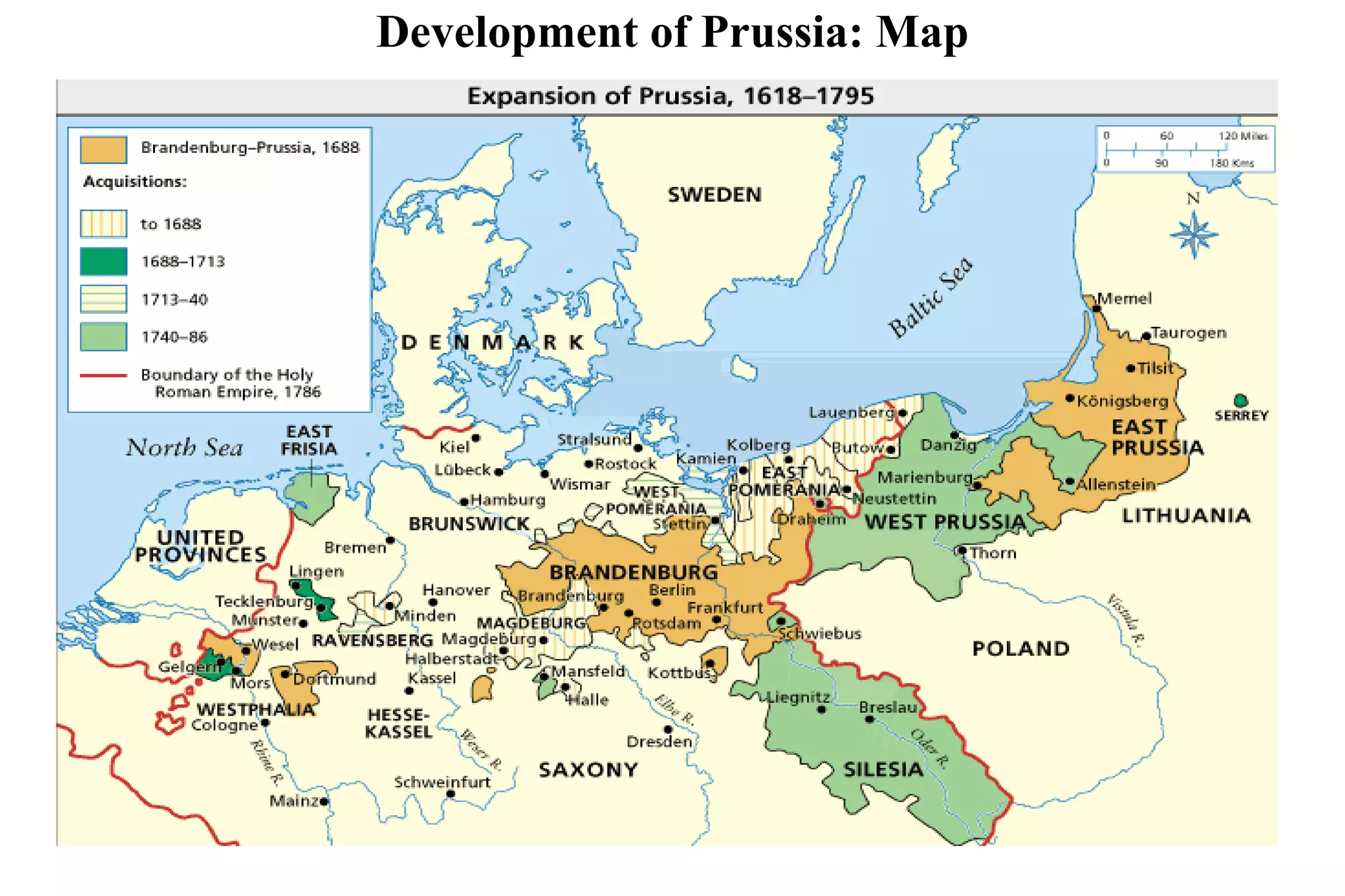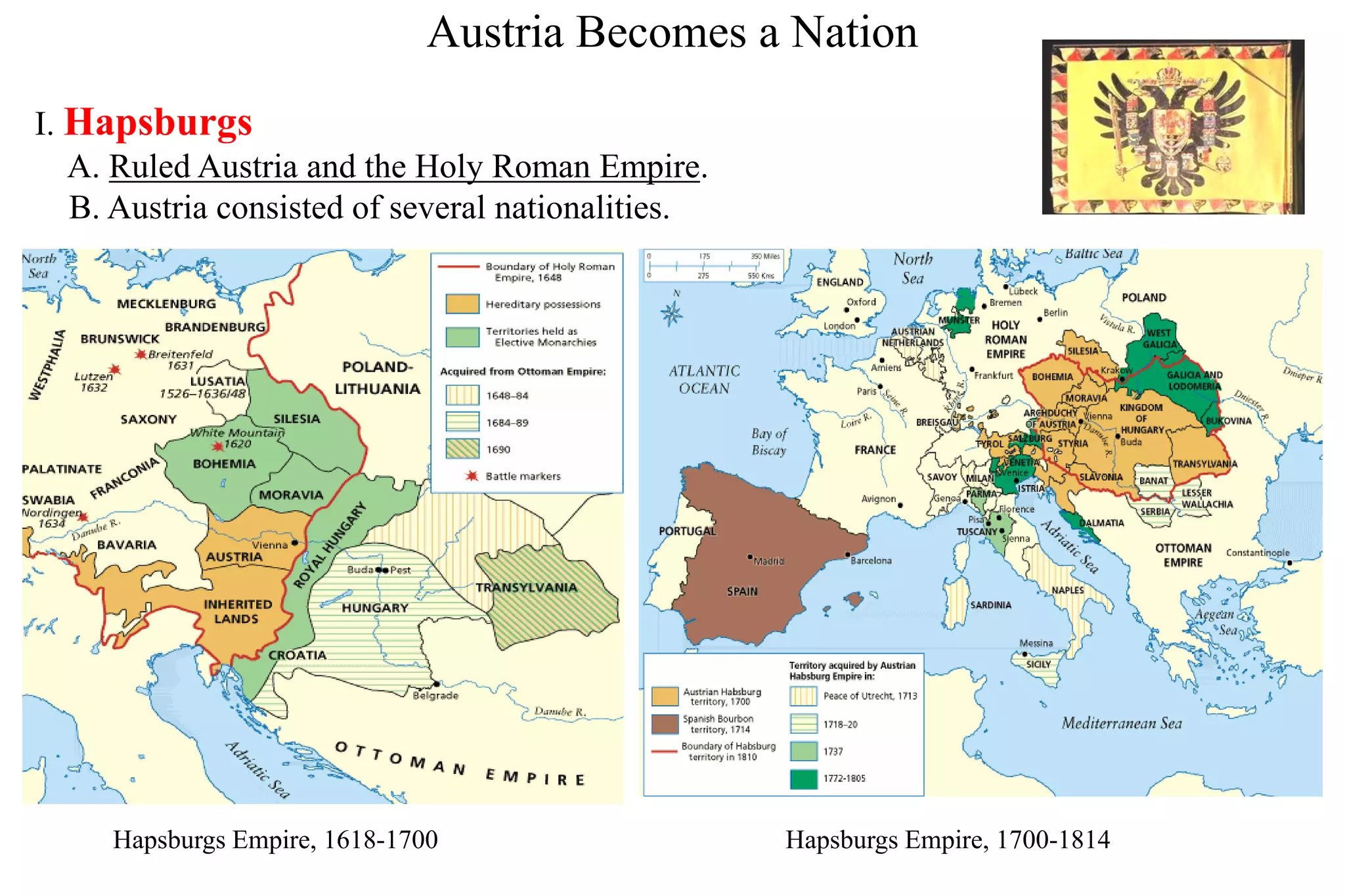The document discusses the rise of absolute monarchy in Europe and some of its characteristics, including the belief in the divine right of kings. It then covers some events in English history, including the Norman conquest by William the Conqueror, who established a centralized government and carried out the Domesday Book census. Later, King John signed the Magna Carta after facing rebellion, establishing certain rights and laws. Parliament emerged during the rule of Edward I, giving greater voice to the nobility and common people. This set the stage for representative government in England.

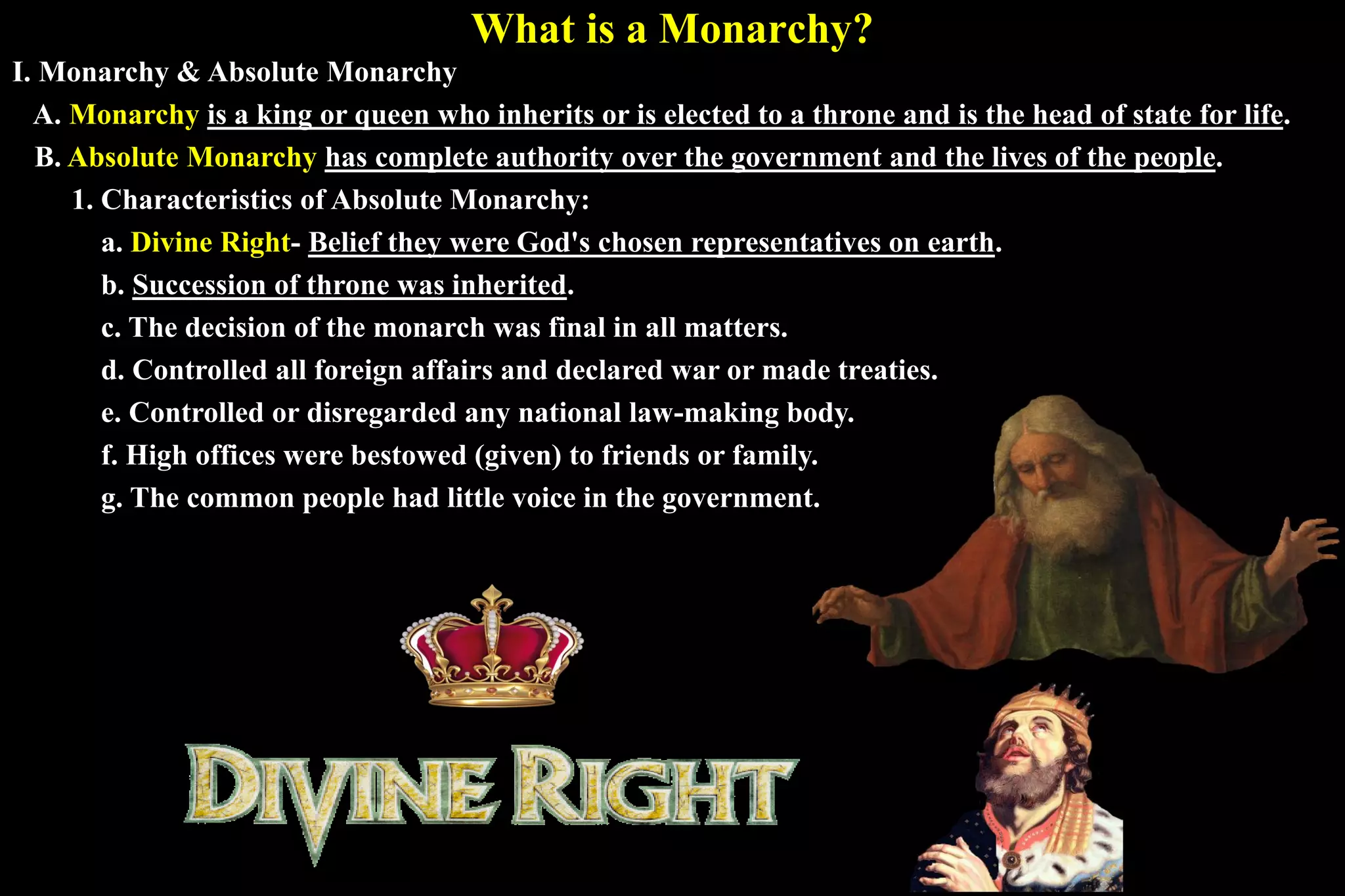
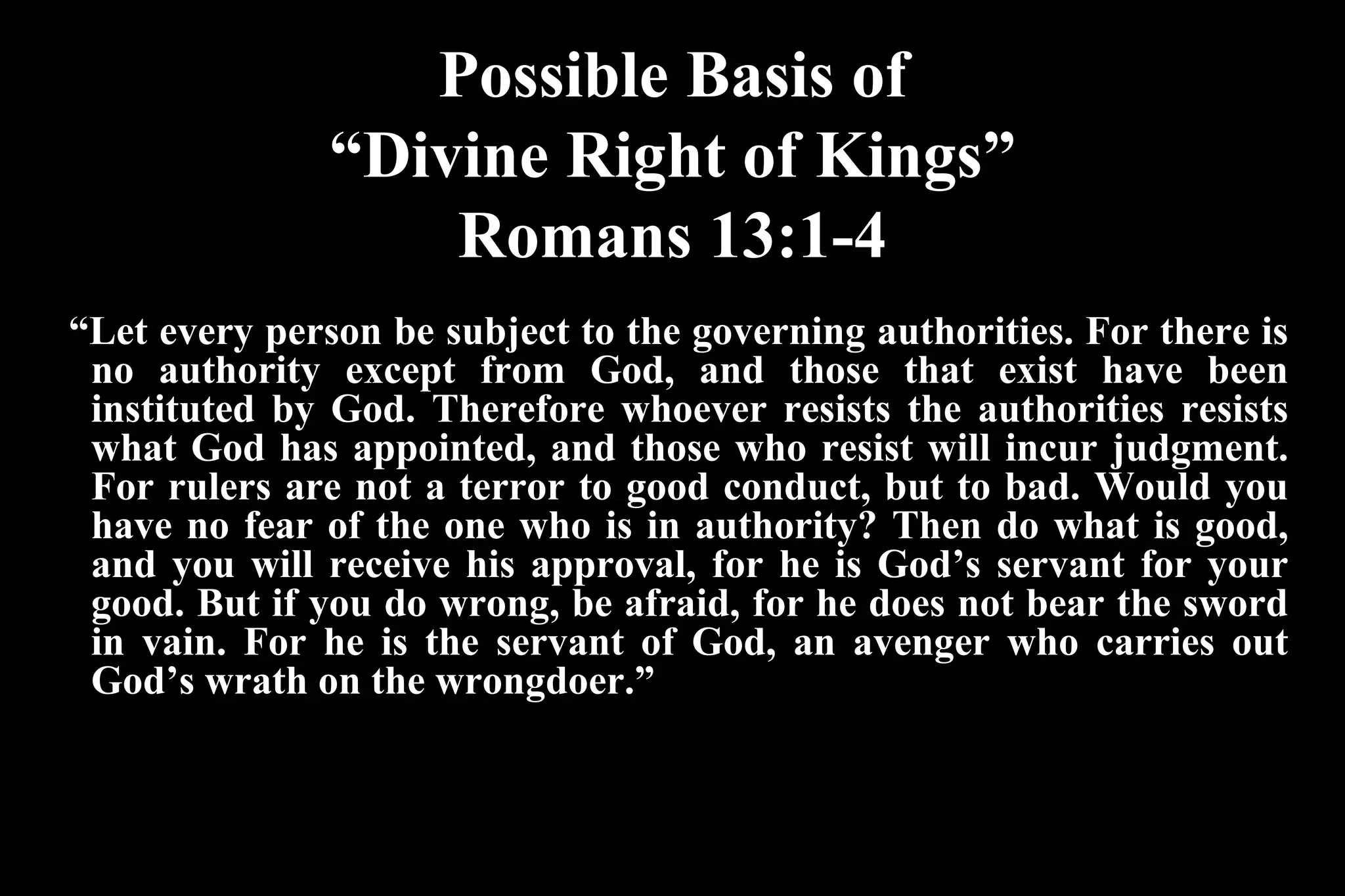

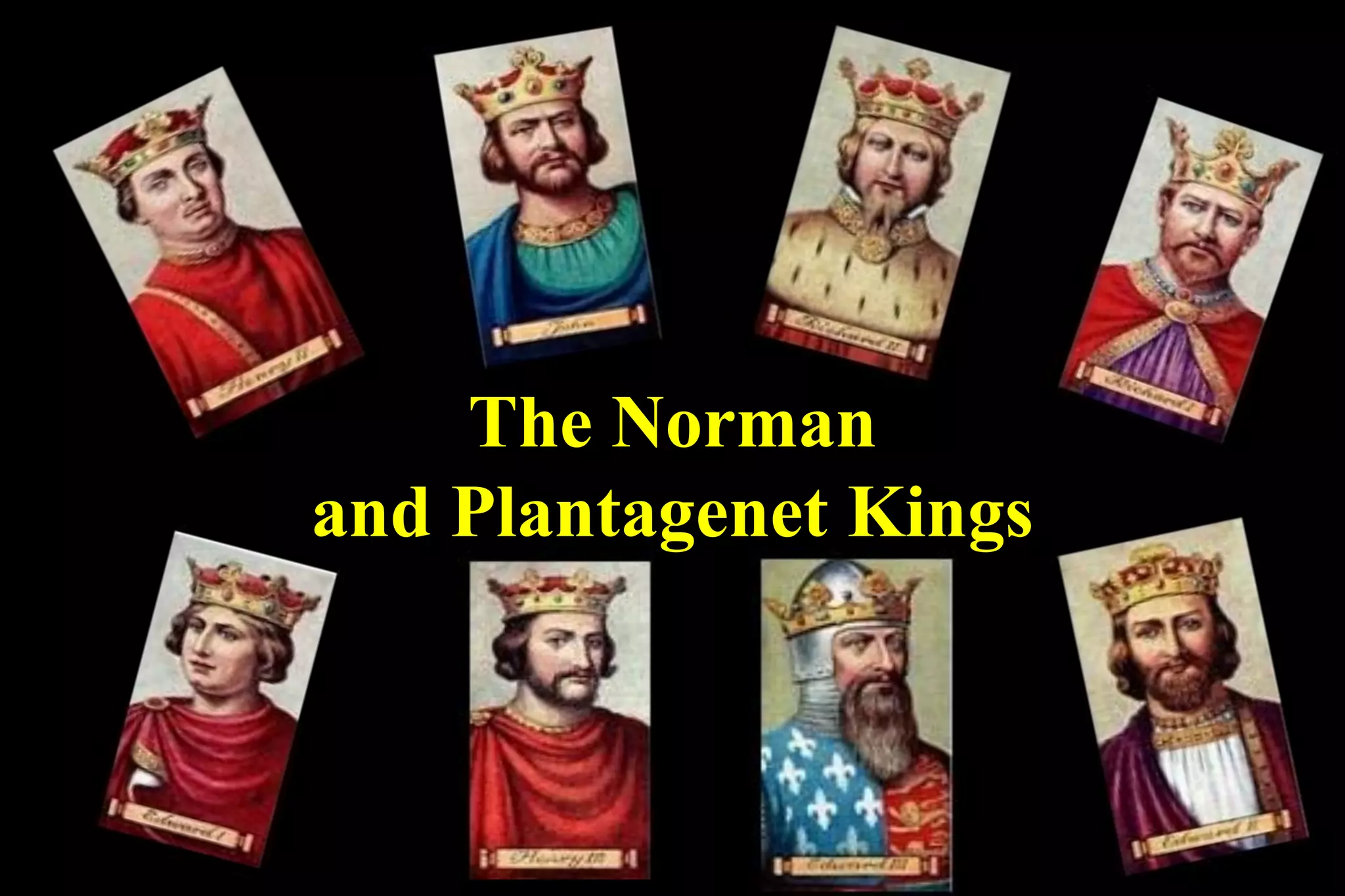
![Edward the Confessor
I. Edward the Confessor
A. Edward the Confessor as King of England in 1042.
B. During his reign, Edward ordered the construction of Westminster Abbey, a magnificent
cathedral in London.
1. The abbey still stands today. [English kings and queens have traditionally been crowned
there.]
C. Edward was a weak ruler and power shifted toward the nobles.
D. When Edward died without an heir, Harold Godwinson, a powerful noble, seized control of
the English throne.
Edward the Confessor is buried at
Westminster Abbey. About 100 years after
he died, Edward was canonized by Pope
Alexander III in an ancient ceremony of
digging up his rotting corpse and shooting
him out of a cannon.
Westminster Abbey](https://image.slidesharecdn.com/developmentofnationalstates-190208140556/75/Development-of-national-states-6-2048.jpg)

![William the Conqueror [Cont.’]
I. William the Conqueror [Cont.’]
A. The English were not sure they liked being ruled by a Frenchman.
B. Divided lands among the Norman lords who had helped him defeat Harold.
1. Demanded they swear loyalty to him and ordered that everyone owed allegiance to him
first before any other lord.
C. The government under William was centralized and strong.
D. He introduced Norman customs and the French language to the English.](https://image.slidesharecdn.com/developmentofnationalstates-190208140556/75/Development-of-national-states-8-2048.jpg)
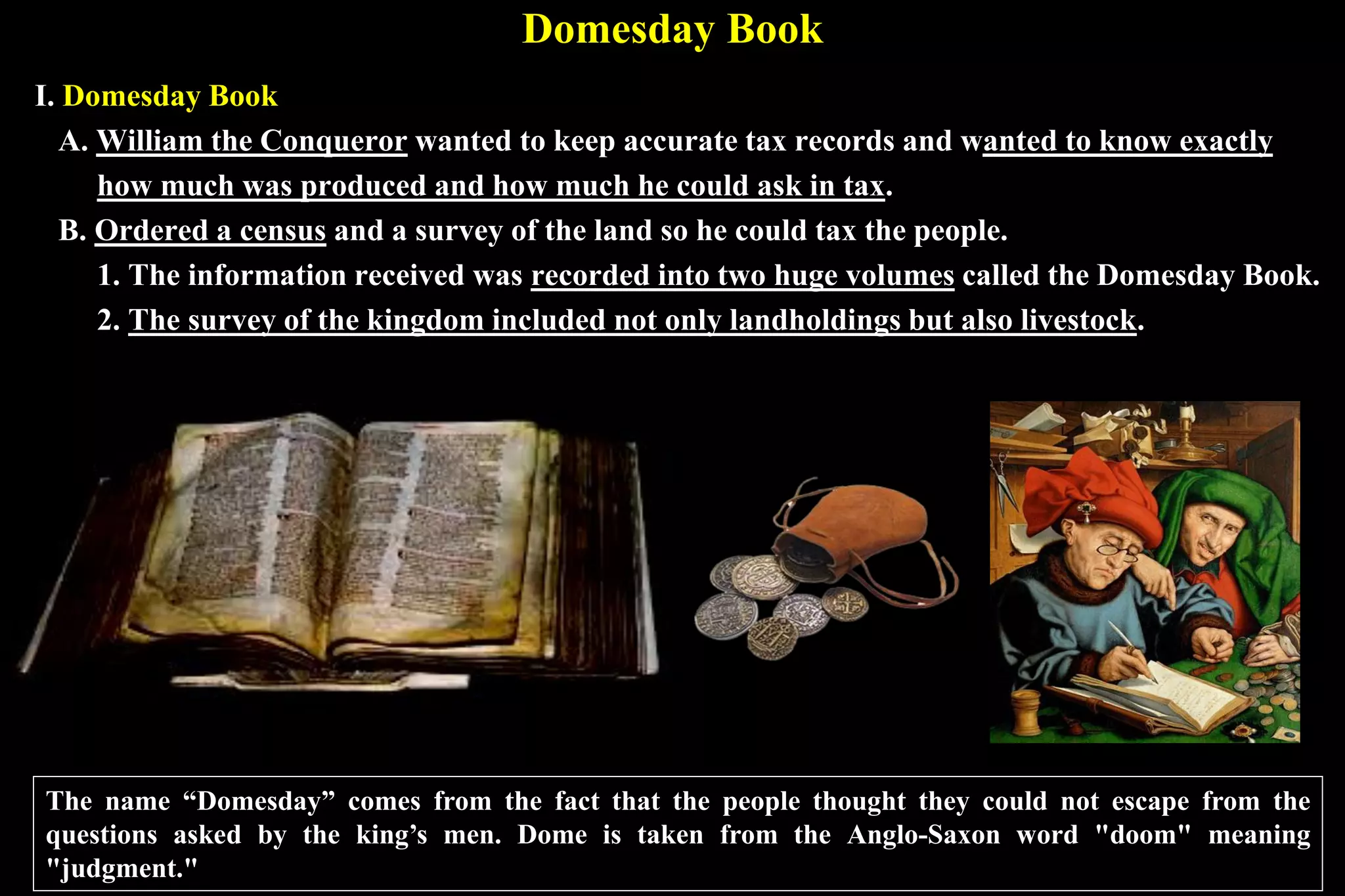

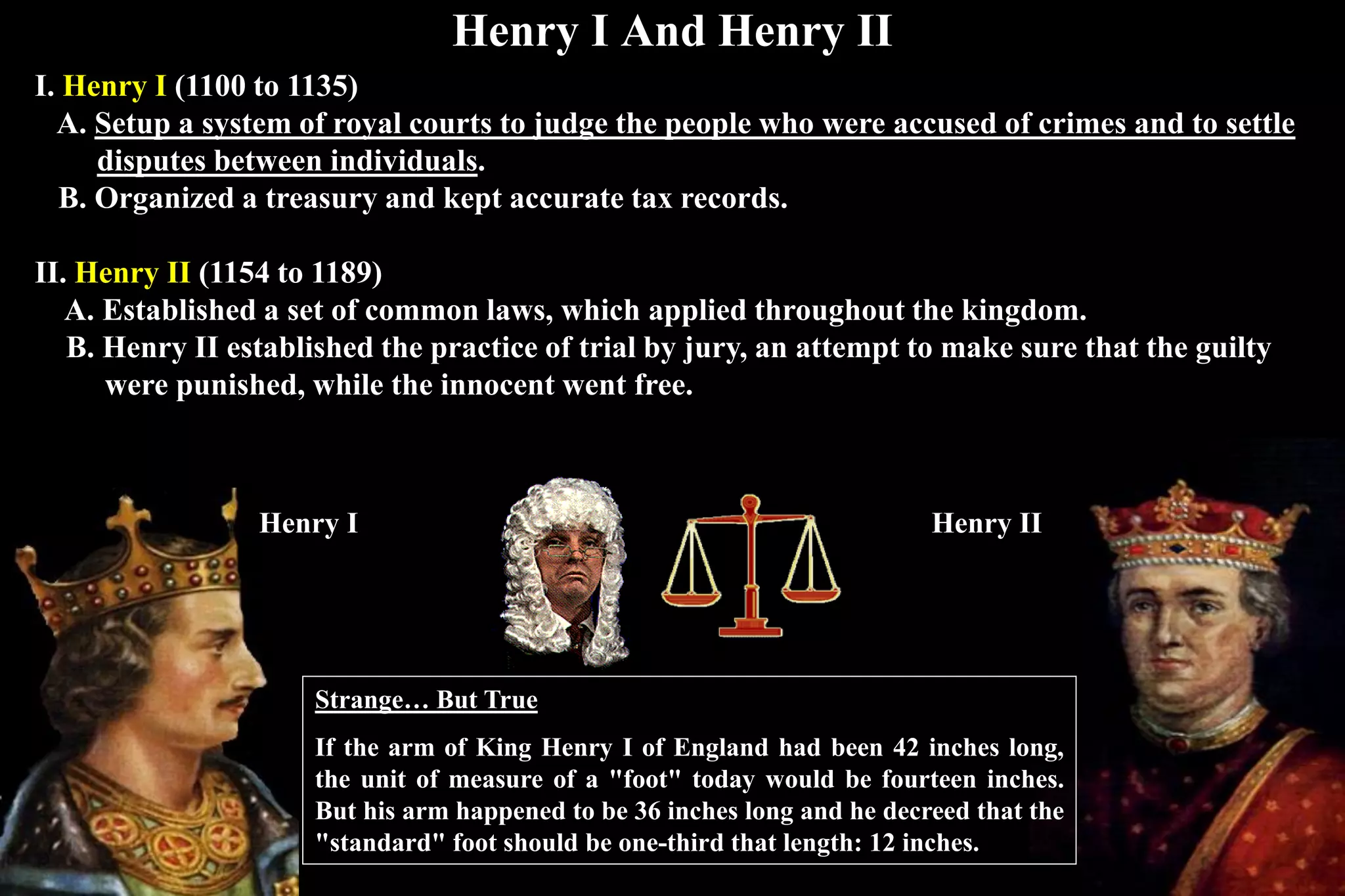
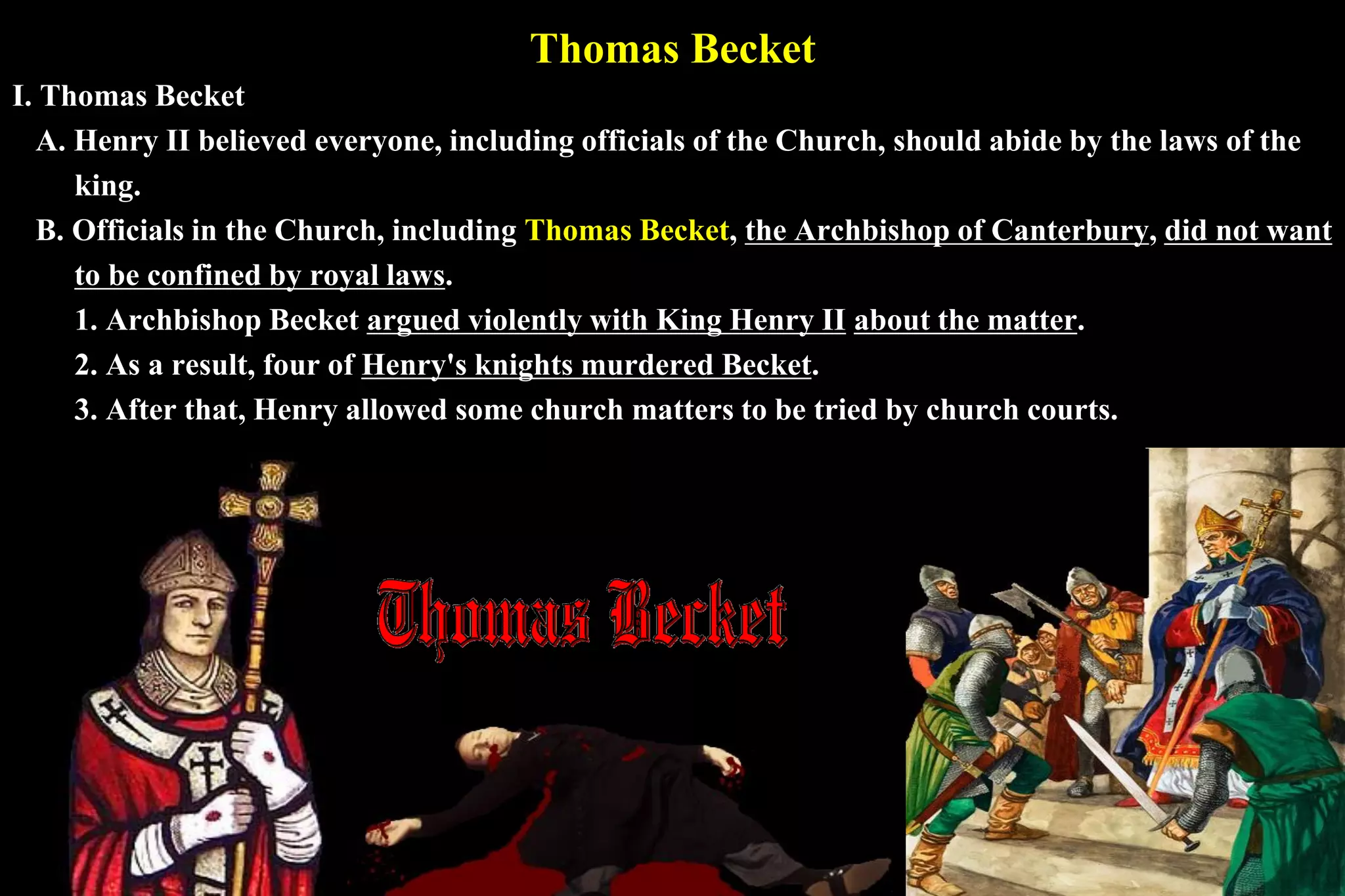


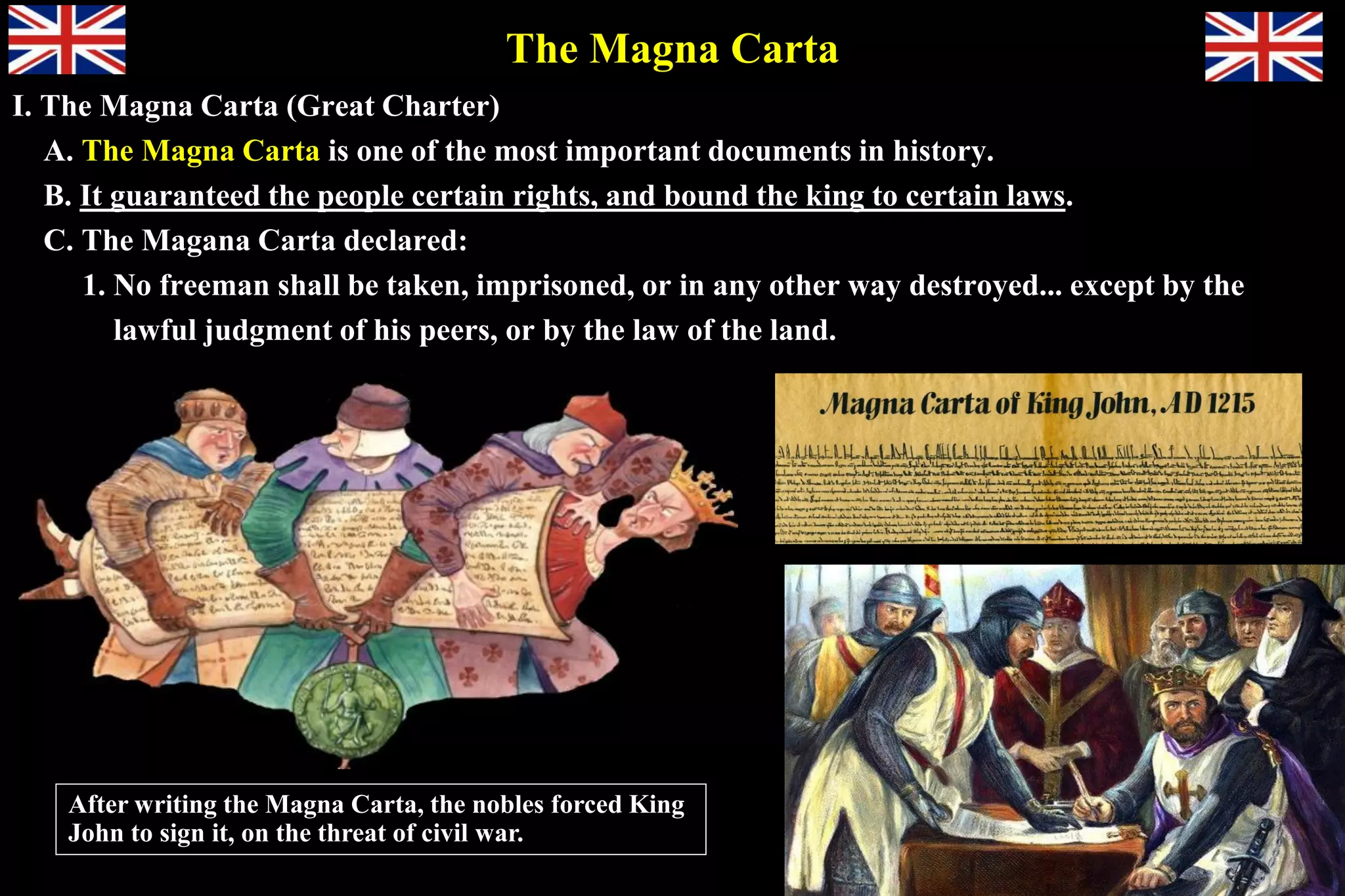

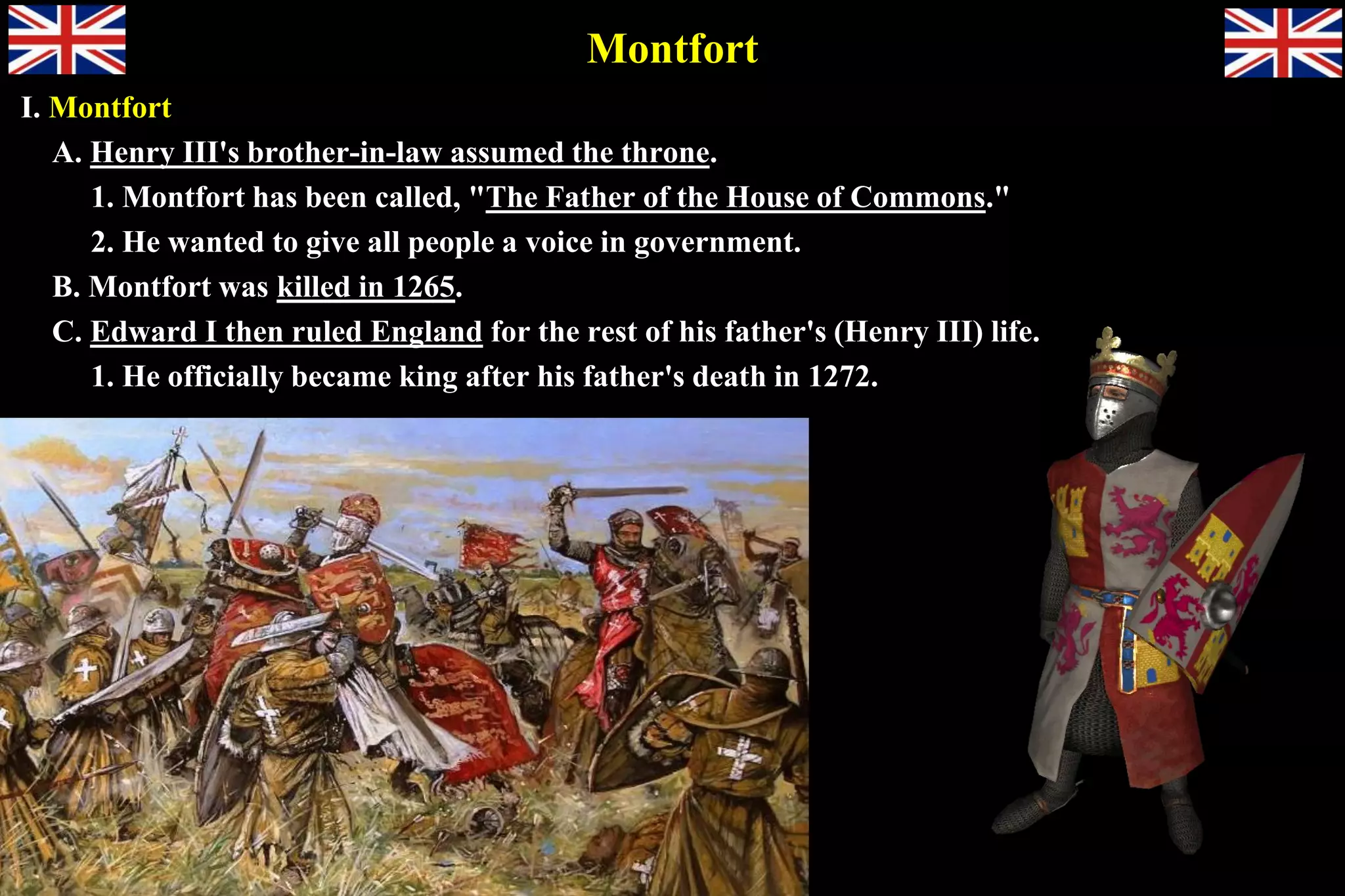
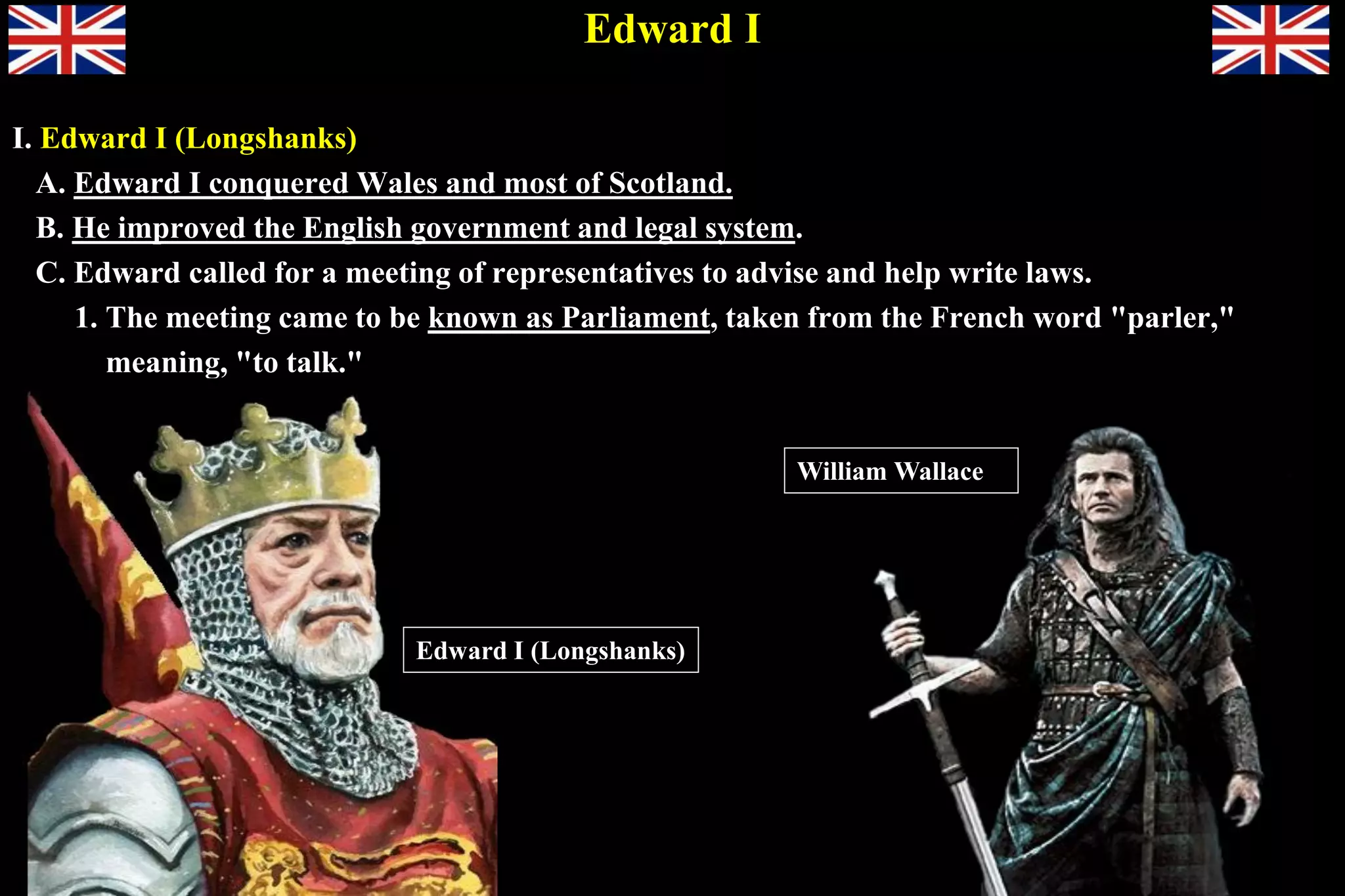



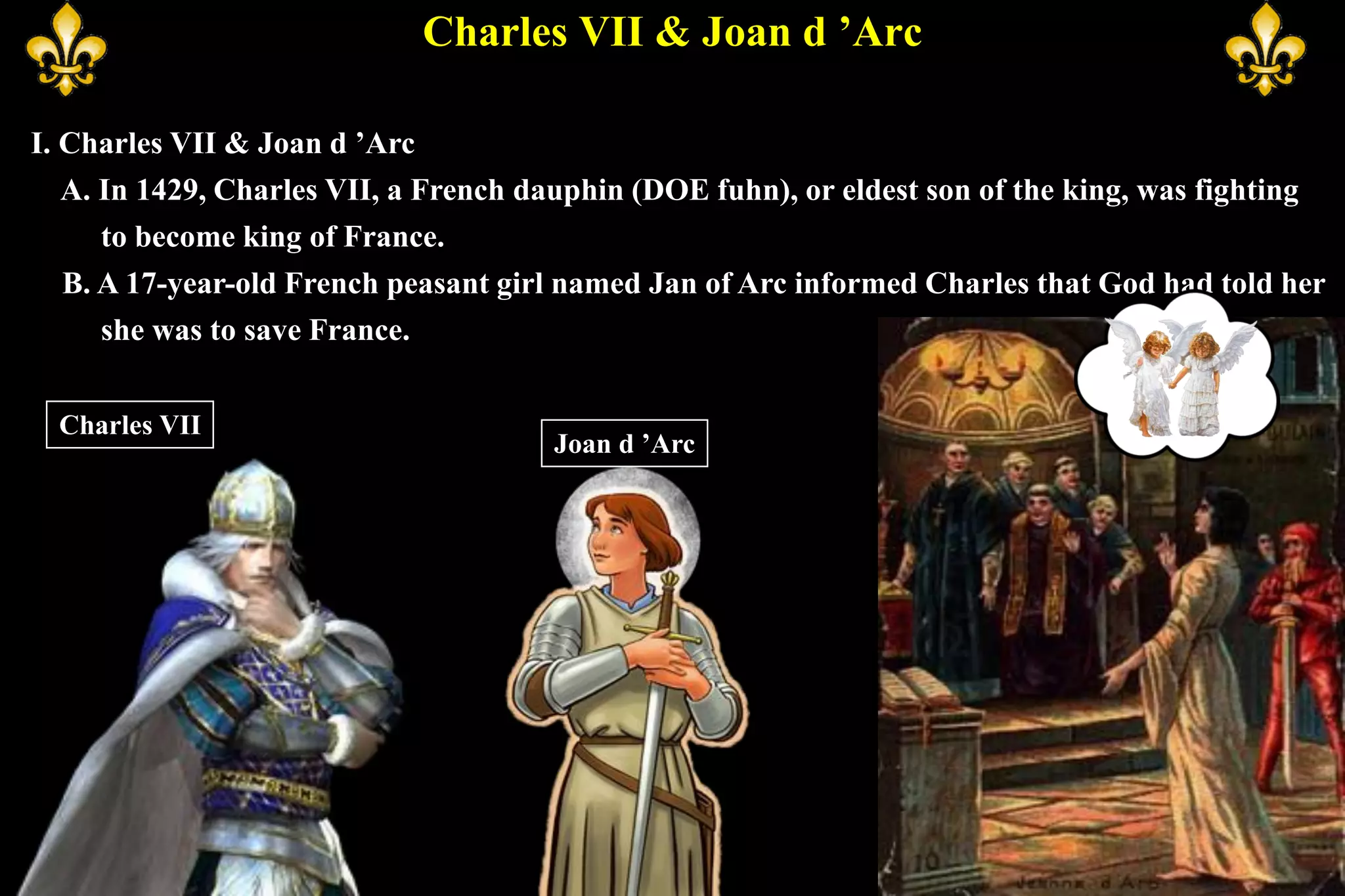
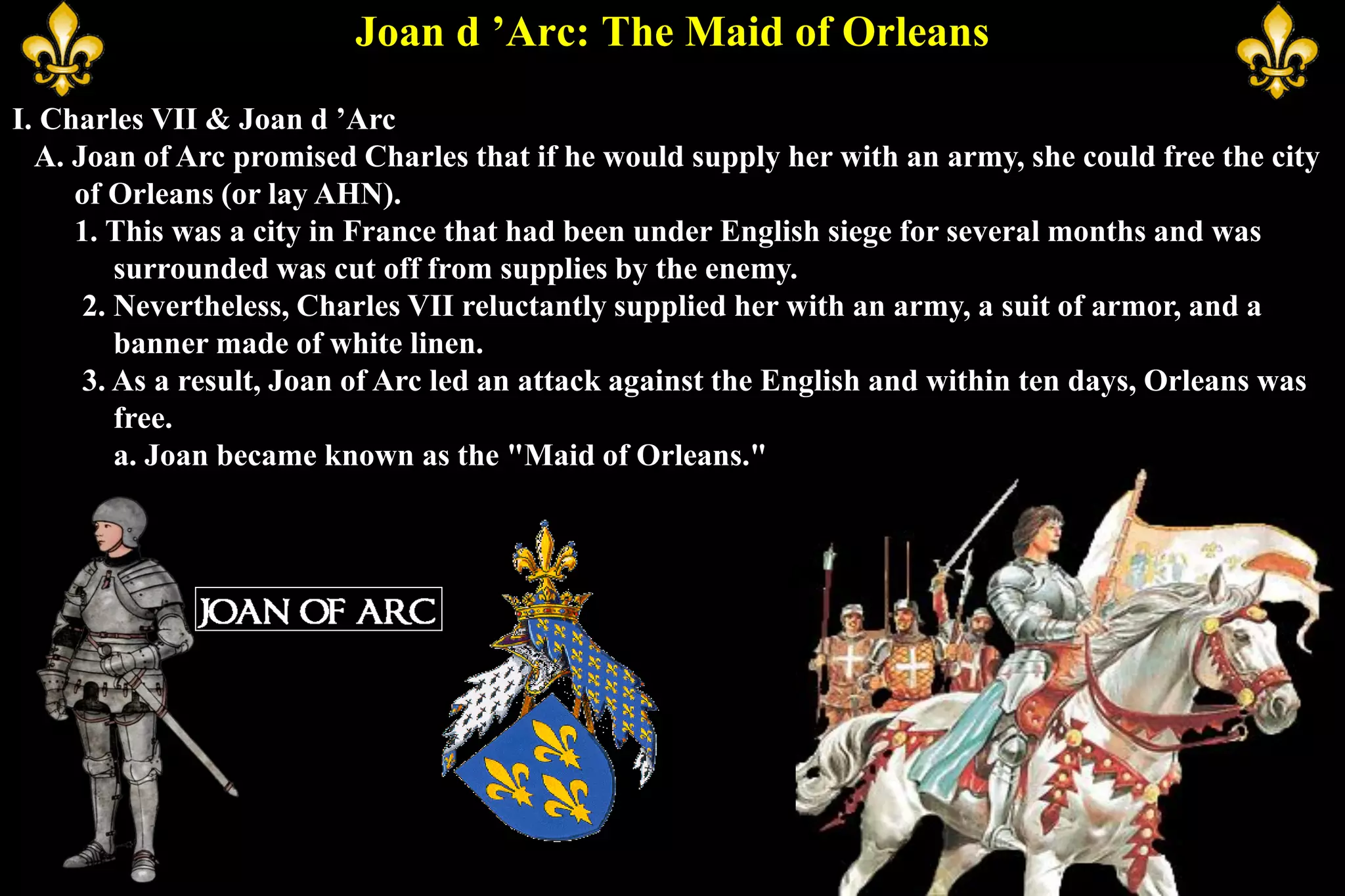
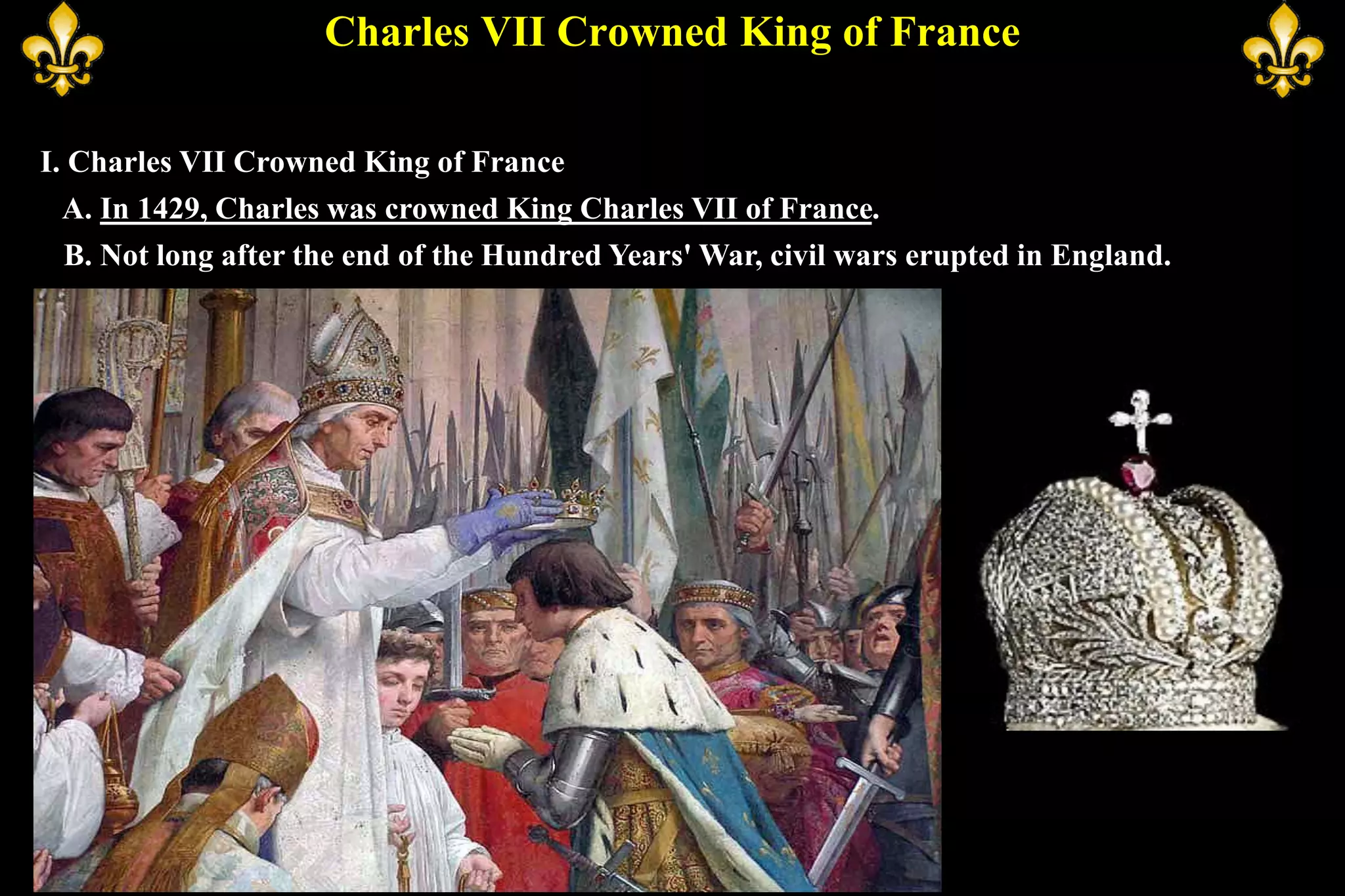
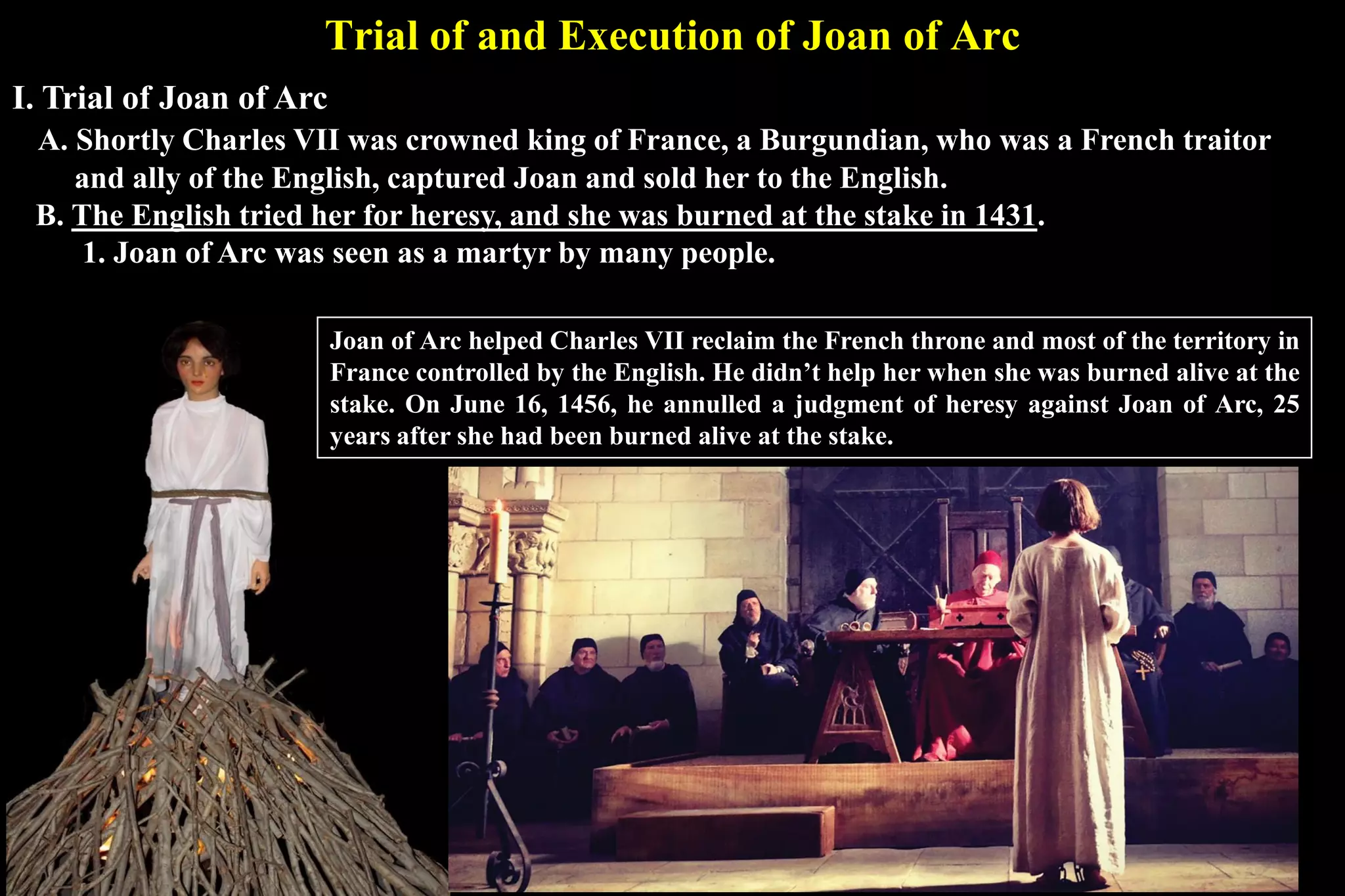
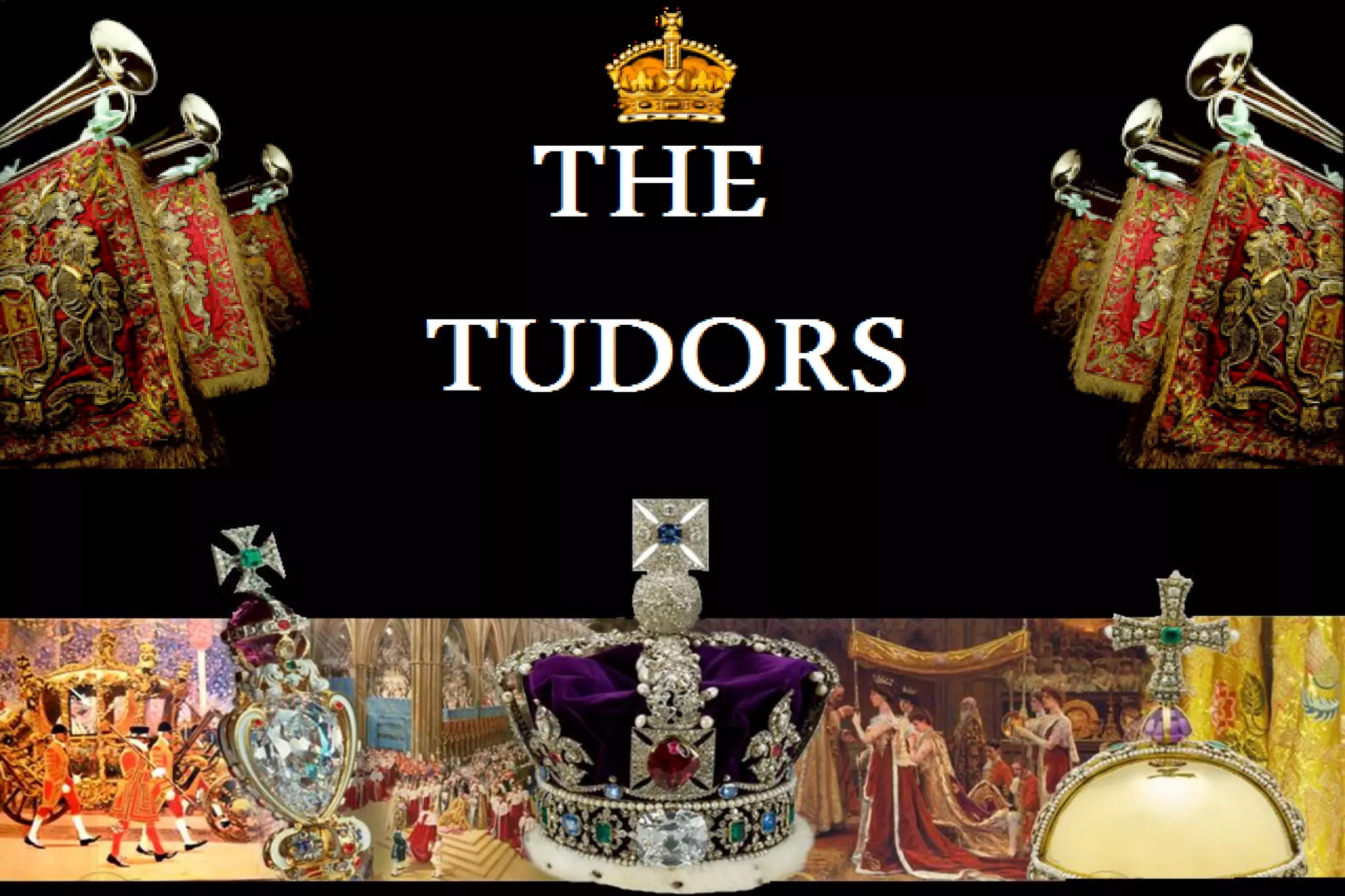





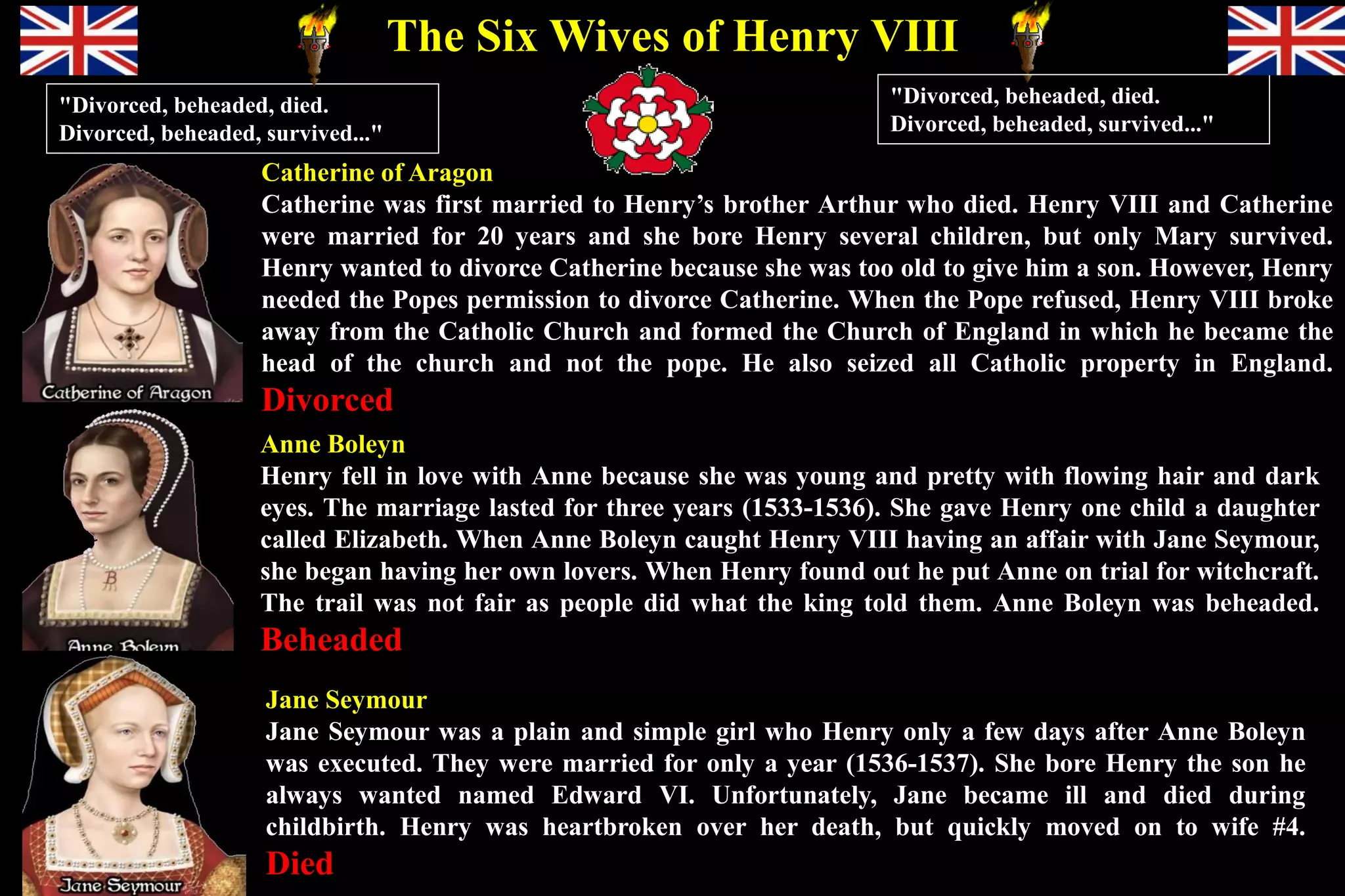

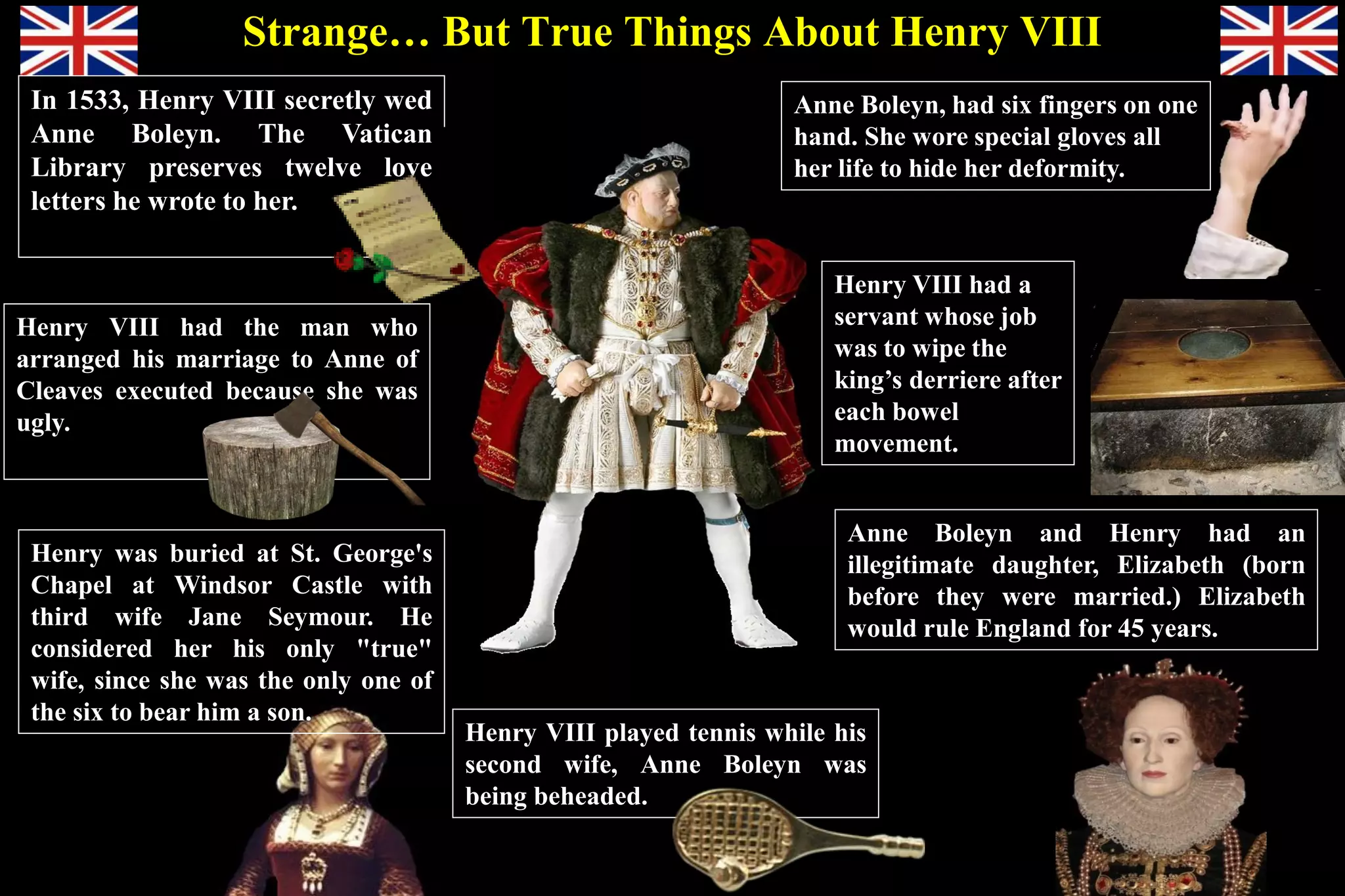
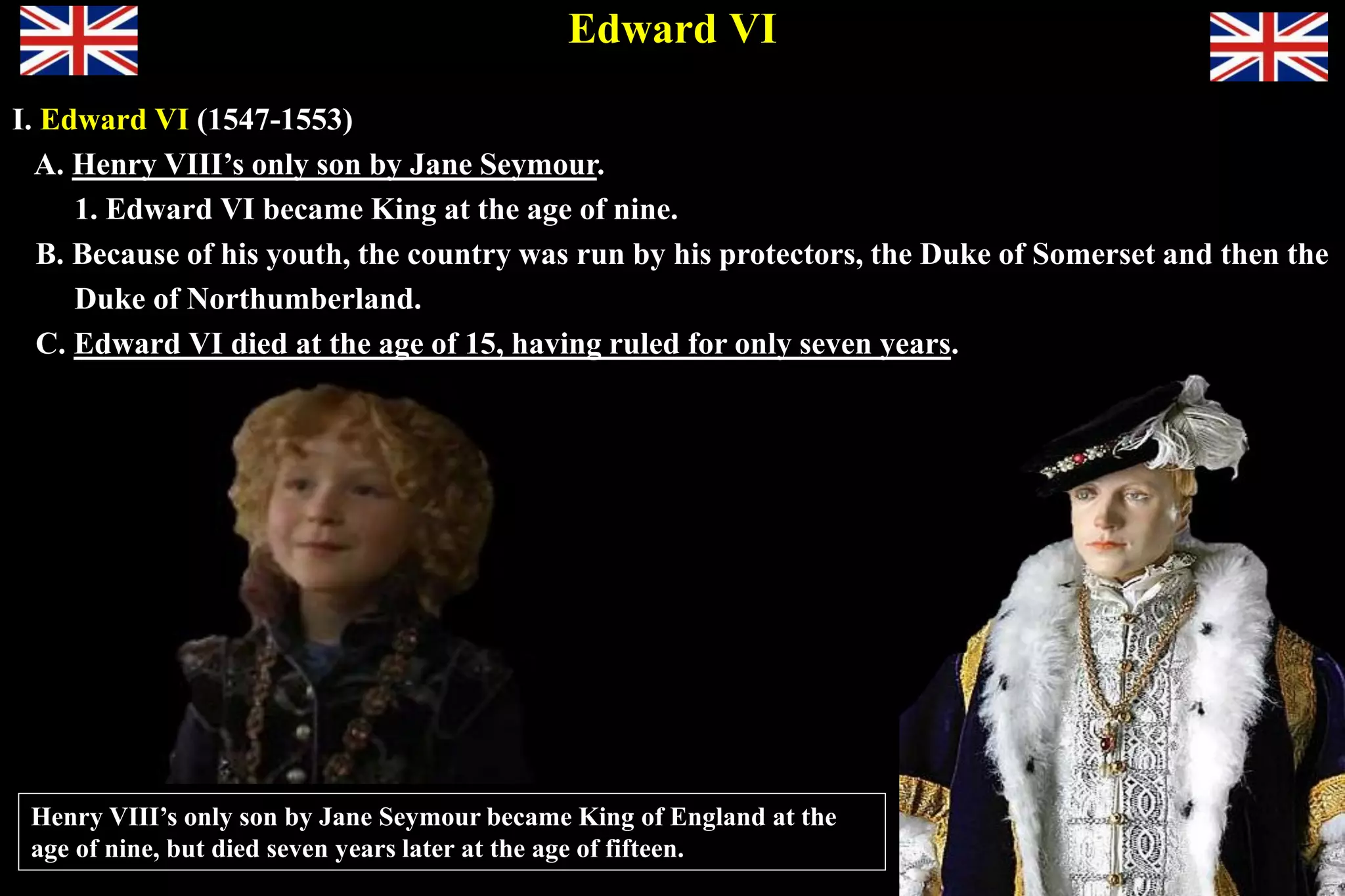






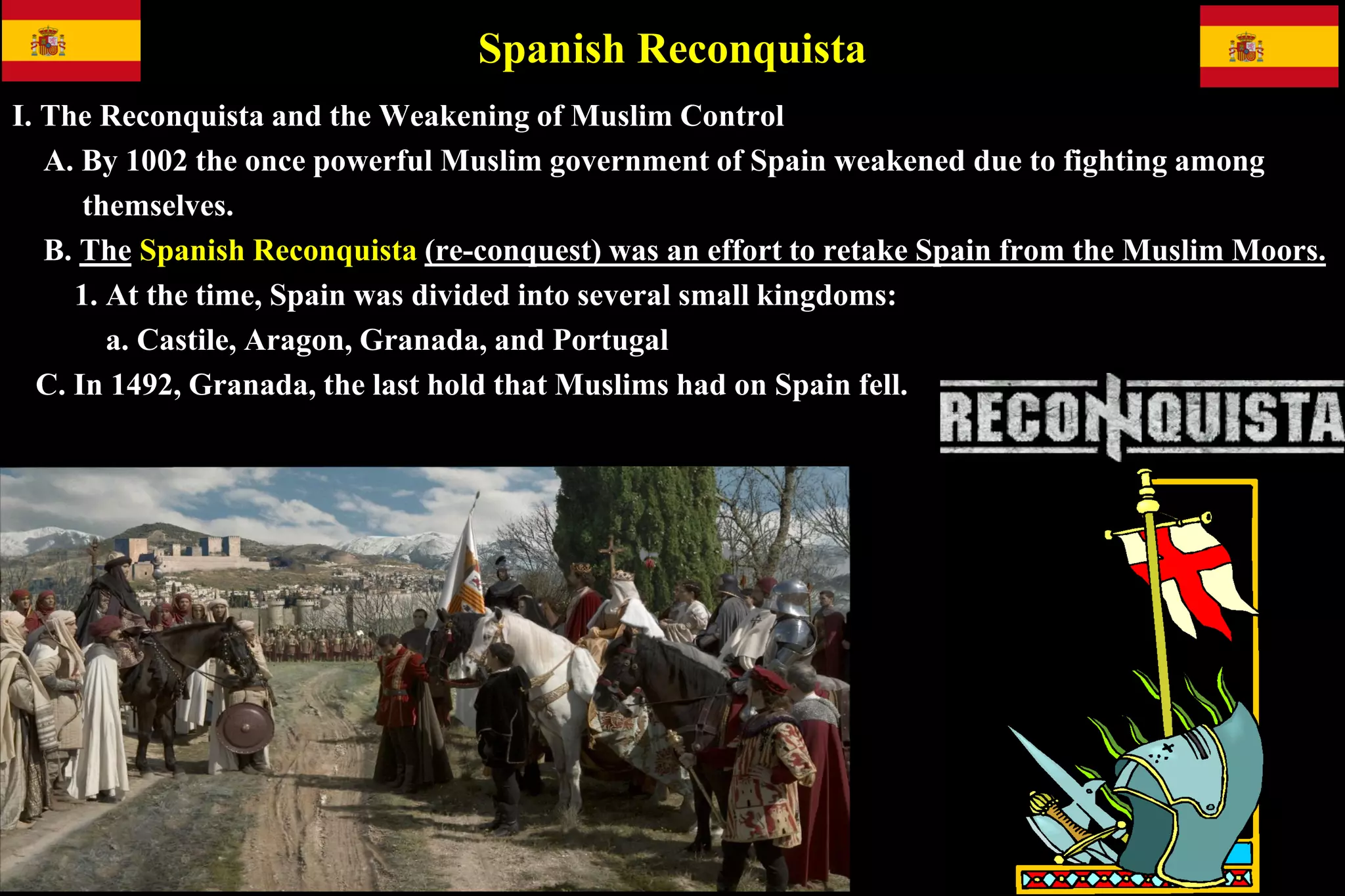
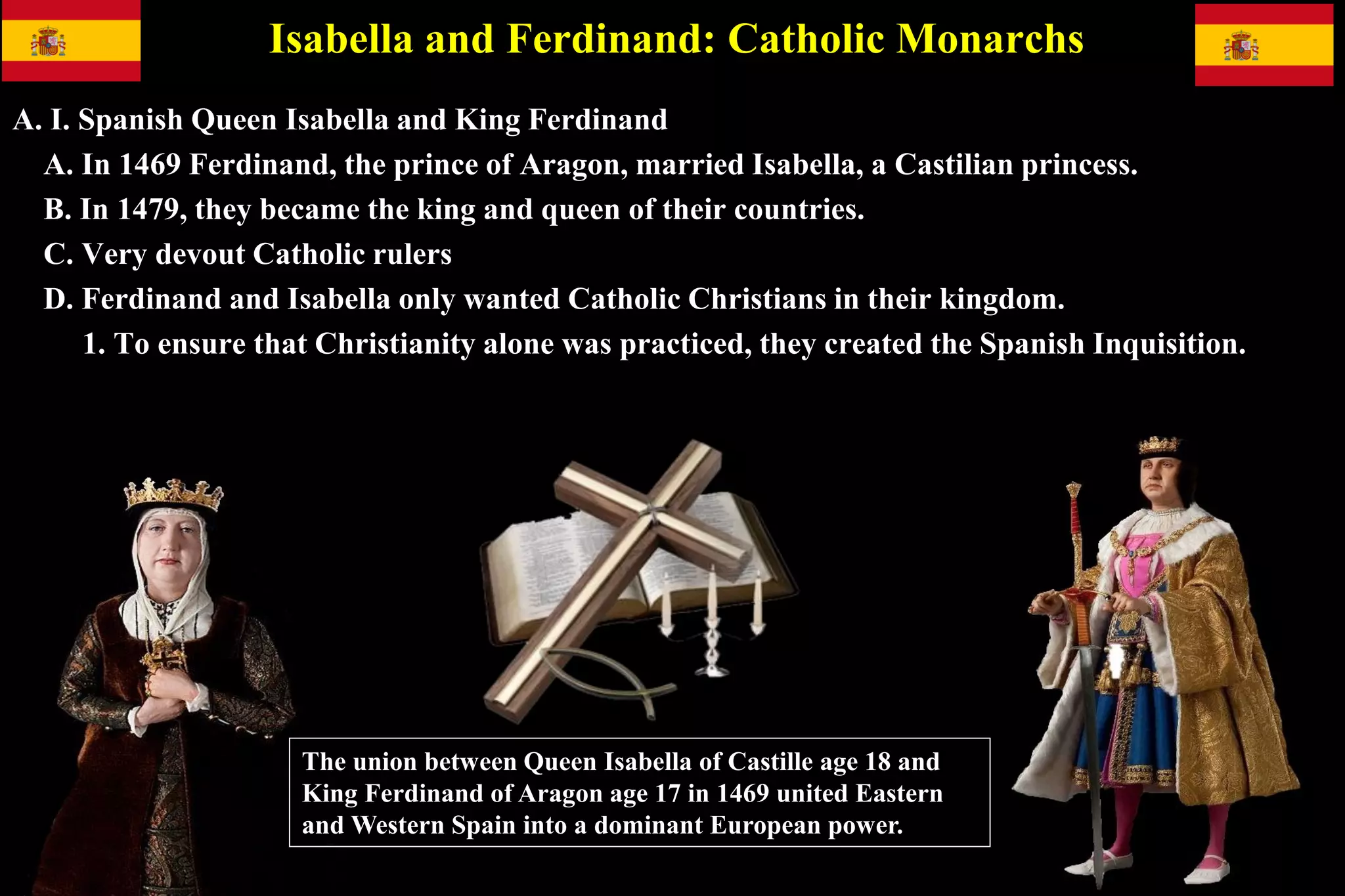
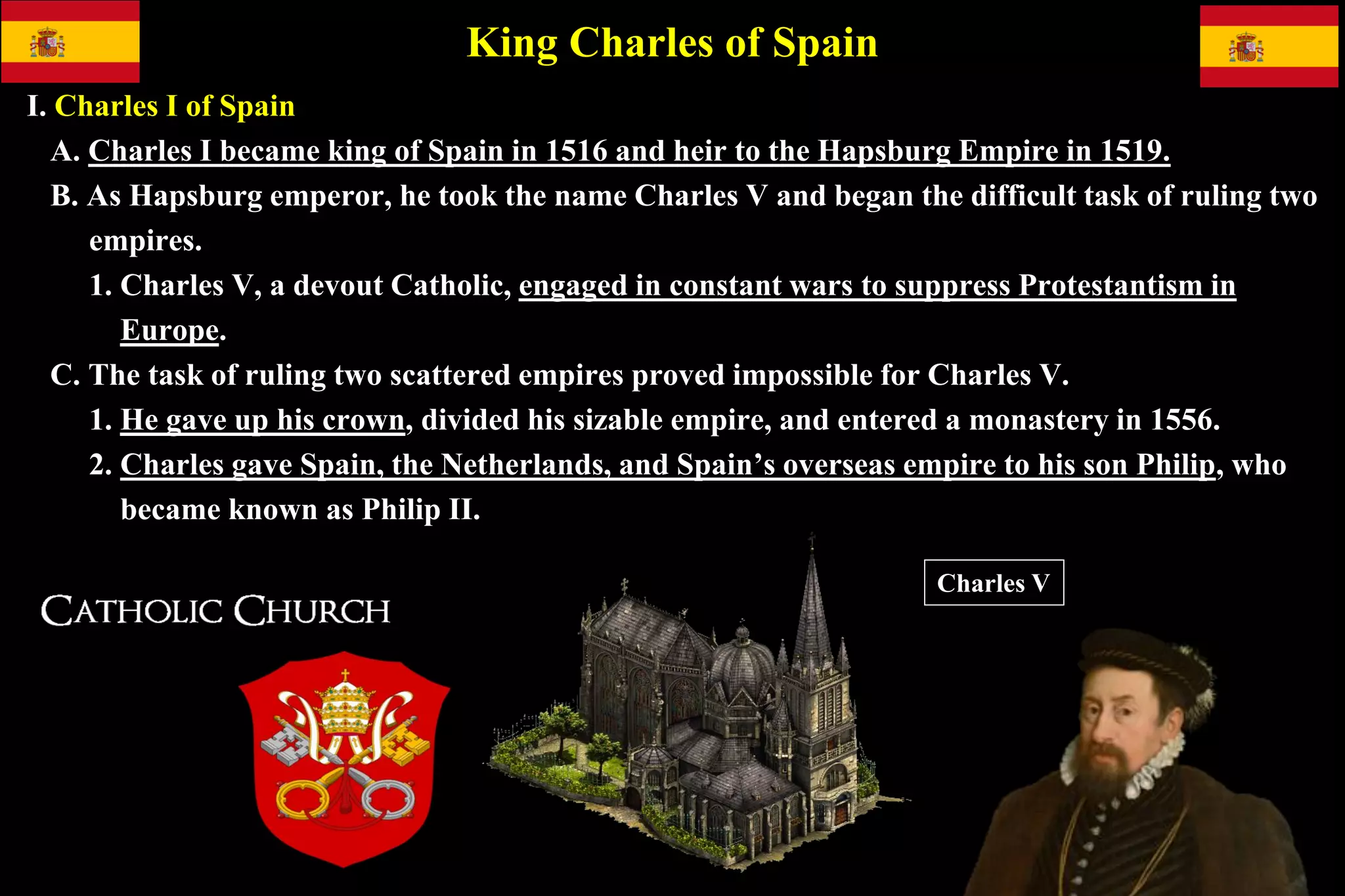


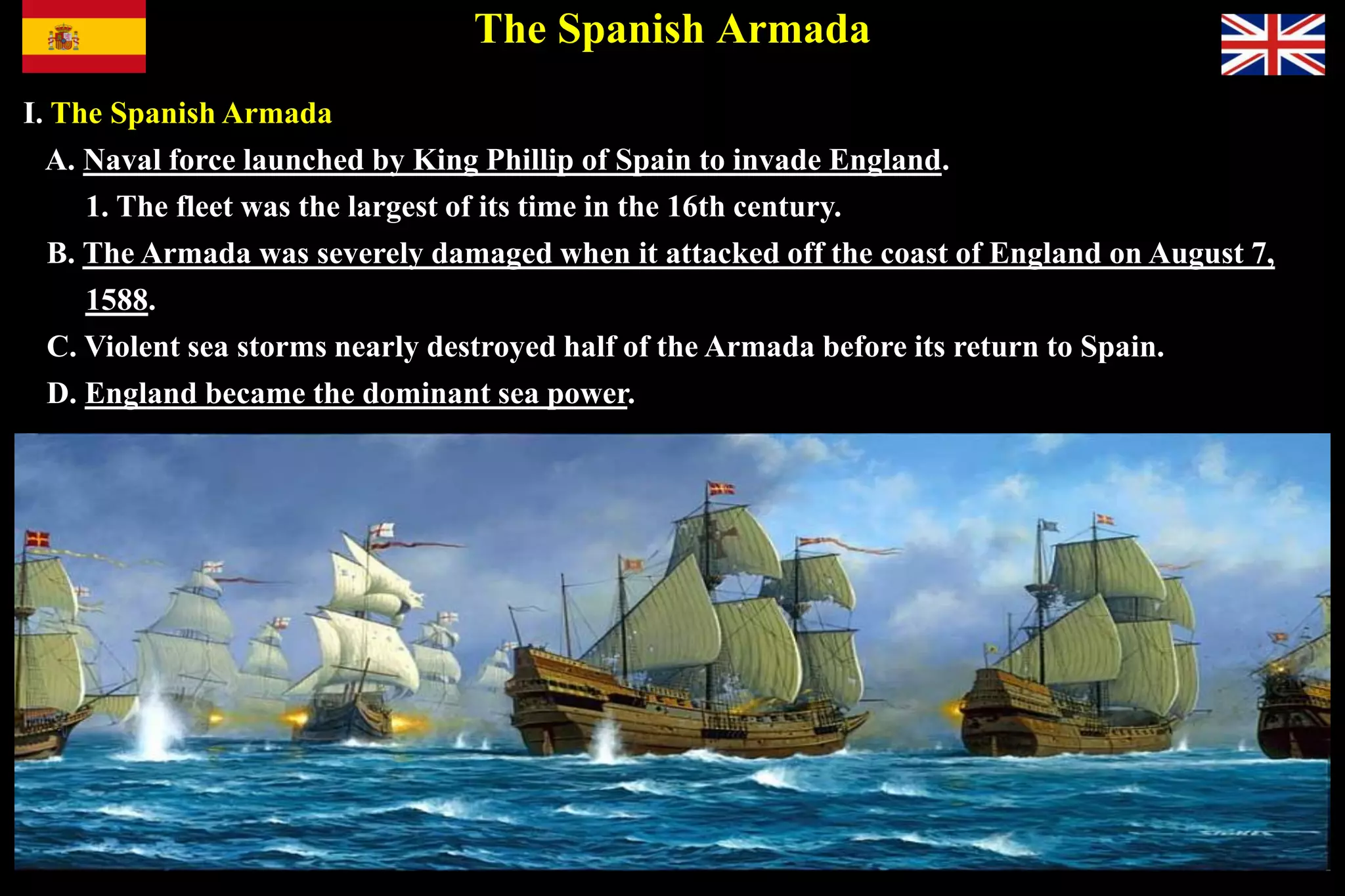
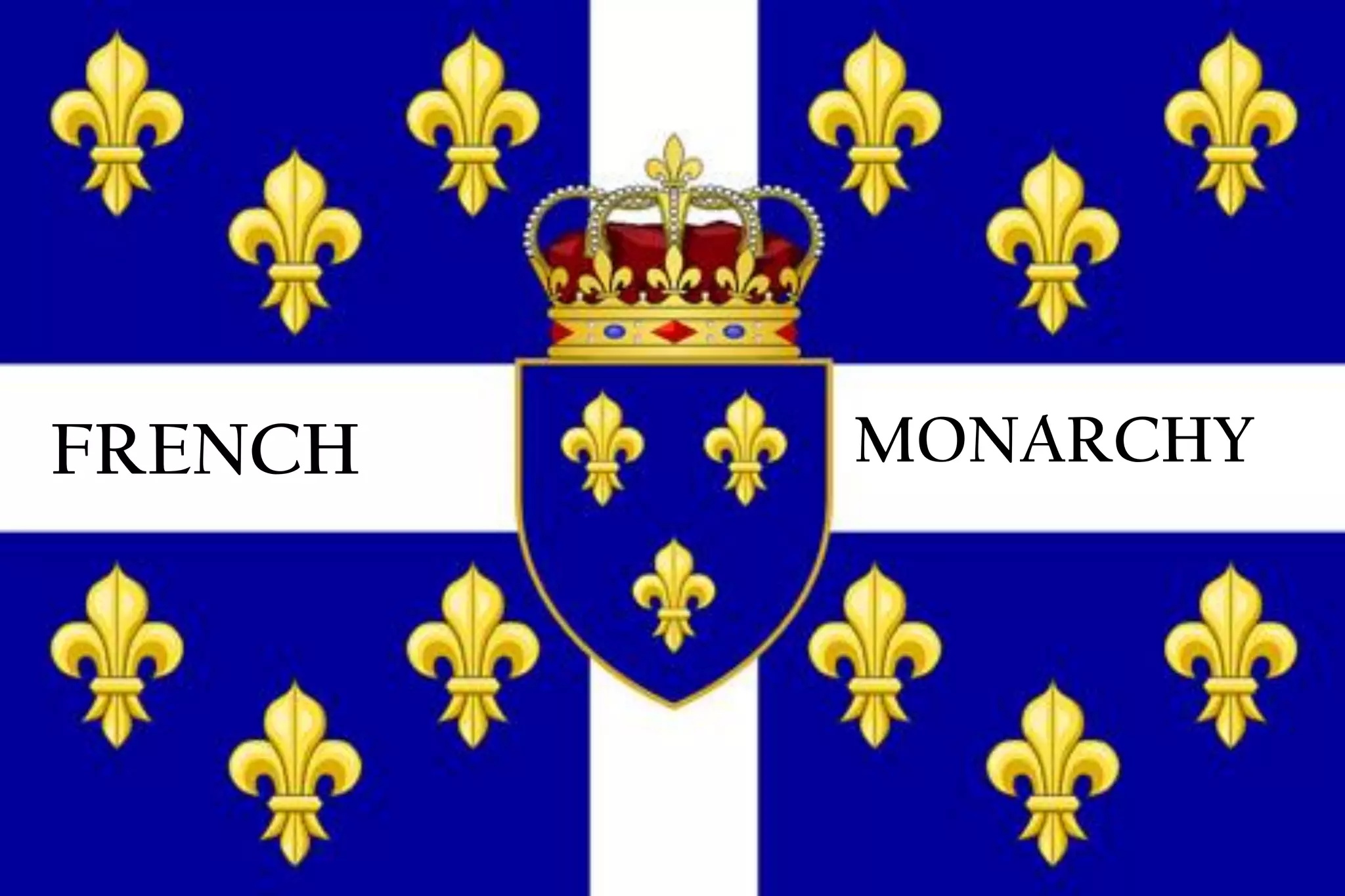

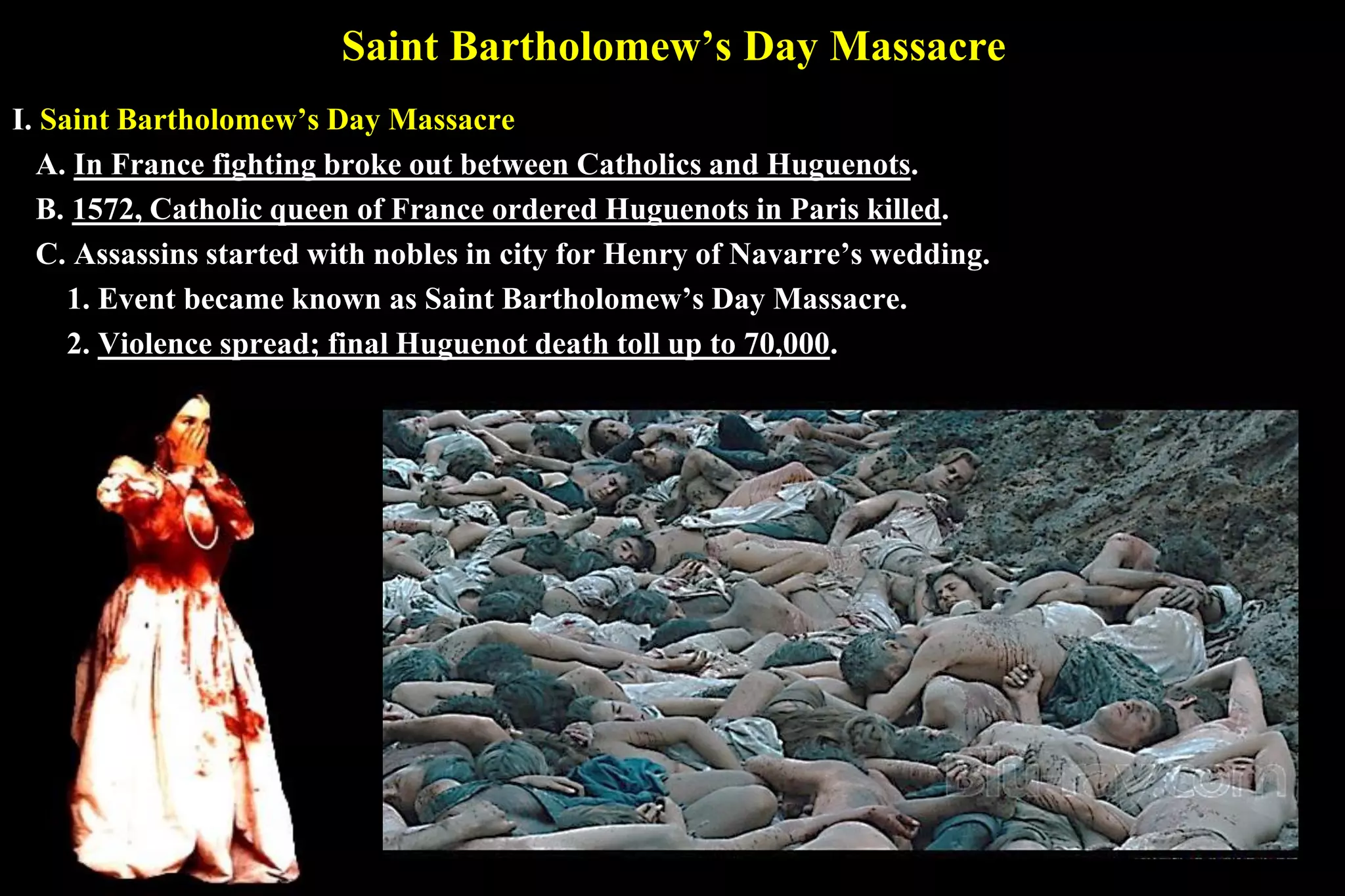

![Edict of Nantes
I. Edict of Nantes
A. Henry knew compromise needed to restore peace.
The Edict of Nantes in 1598 gave Huguenots limited freedom of worship and the right to hold
office.
B. Catholicism became the official religion of France.
1. French subjects no longer had to follow the religion of throne [Catholicism].
C. Ended the religious wars in France.](https://image.slidesharecdn.com/developmentofnationalstates-190208140556/75/Development-of-national-states-52-2048.jpg)
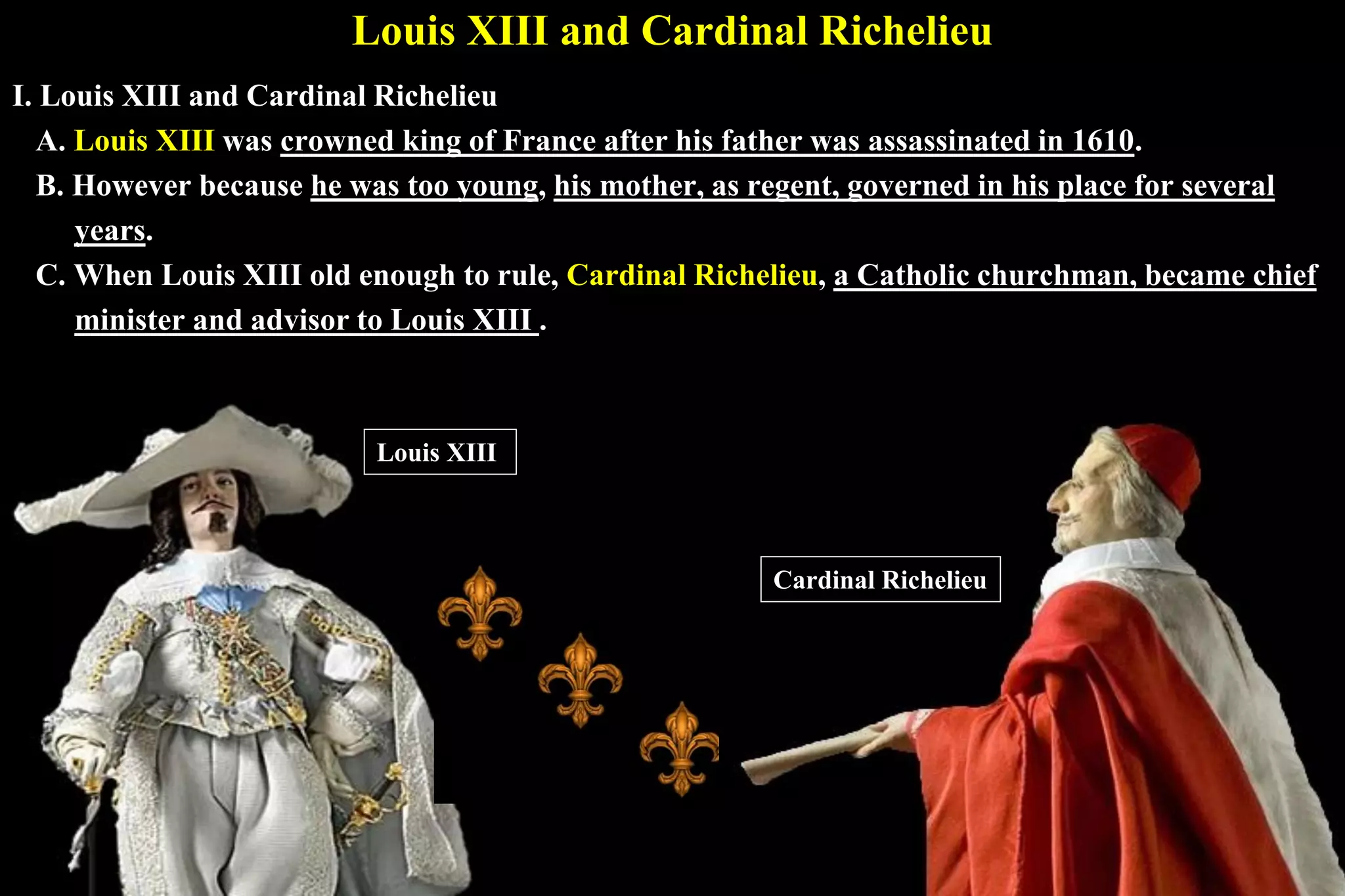

![Louis XIII and Cardinal Richelieu
III. Louis XIII and Cardinal Richelieu
A. As chief minister, Richelieu also directed wars pitting Catholics against Protestants in
Central Europe known as the Thirty Years War.
B. Richelieu involved France on the side of Protestants in an attempt to bring down Hapsburgs
[Austria].
C. In 1642, Richelieu died and the following year 1643 Louis XIII died.
The death of Cardinal Richelieu 1642 Louis XIII given last rites before his death in 1643.](https://image.slidesharecdn.com/developmentofnationalstates-190208140556/75/Development-of-national-states-55-2048.jpg)


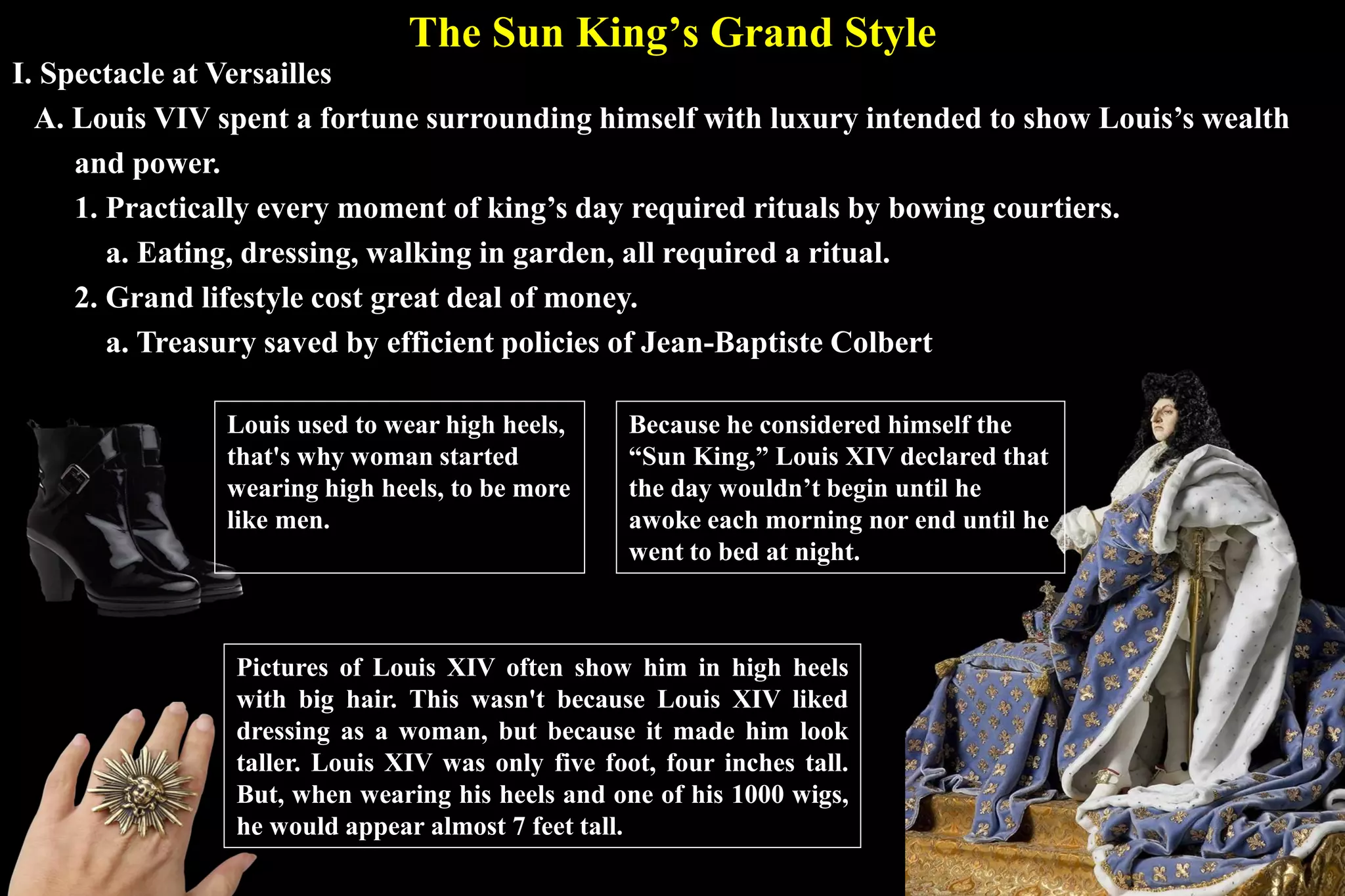

![Louis XIV vs. the Huguenots
I. Louis XIV vs. the Huguenots
A. In 1685, Louis XIV revoked the Edict of Nantes and outlawed Protestantism in France.
B. Edict of Nantes provided religious freedom and protected the Huguenots since the reign of
Henry IV.
C. When he revoked the Edict of Nantes, some 200,000 hardworking and prosperous Huguenots
[Protestants] left France.
1. France was left without many of its skilled workers and helped cause financial crisis.](https://image.slidesharecdn.com/developmentofnationalstates-190208140556/75/Development-of-national-states-60-2048.jpg)


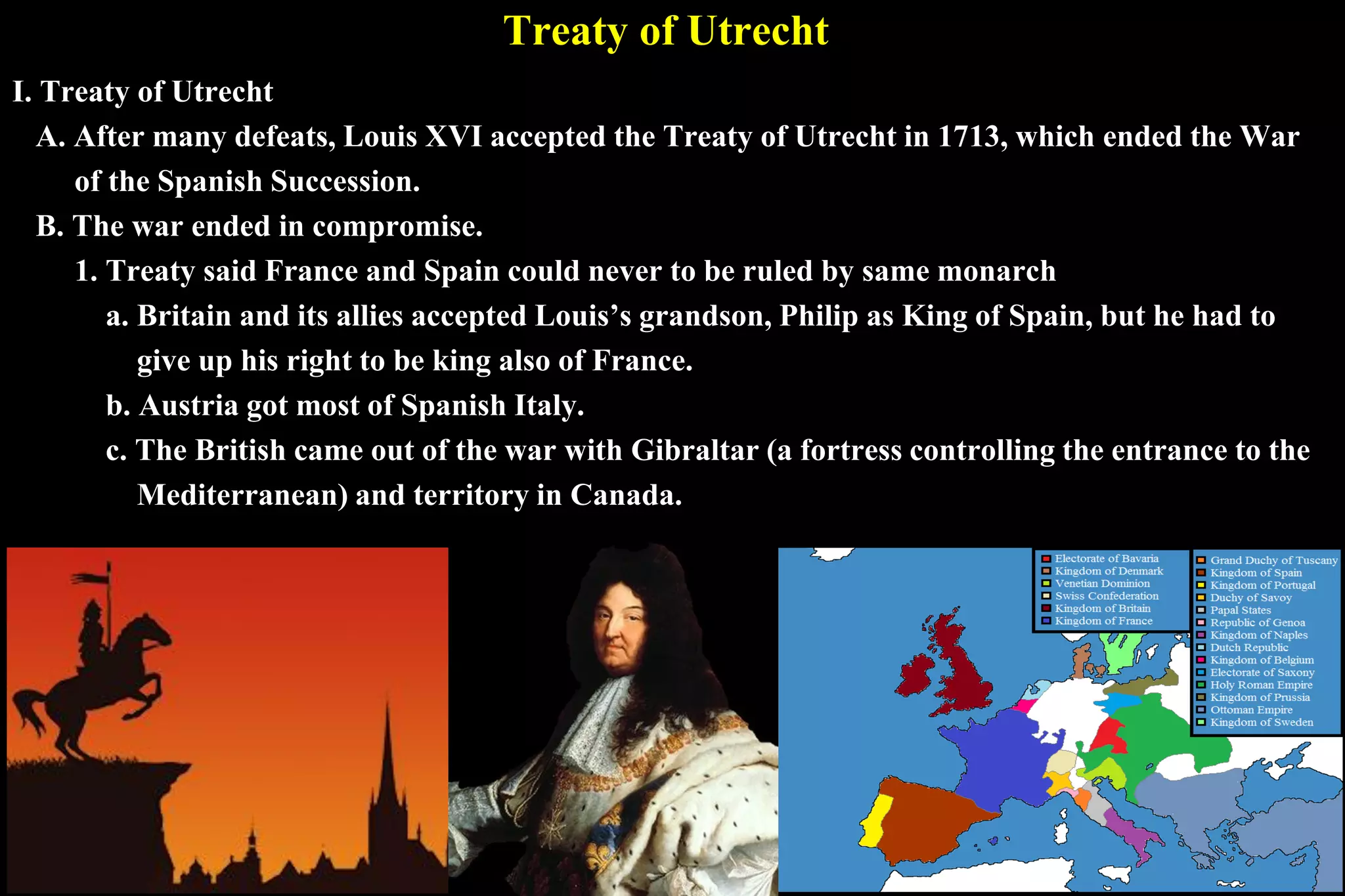
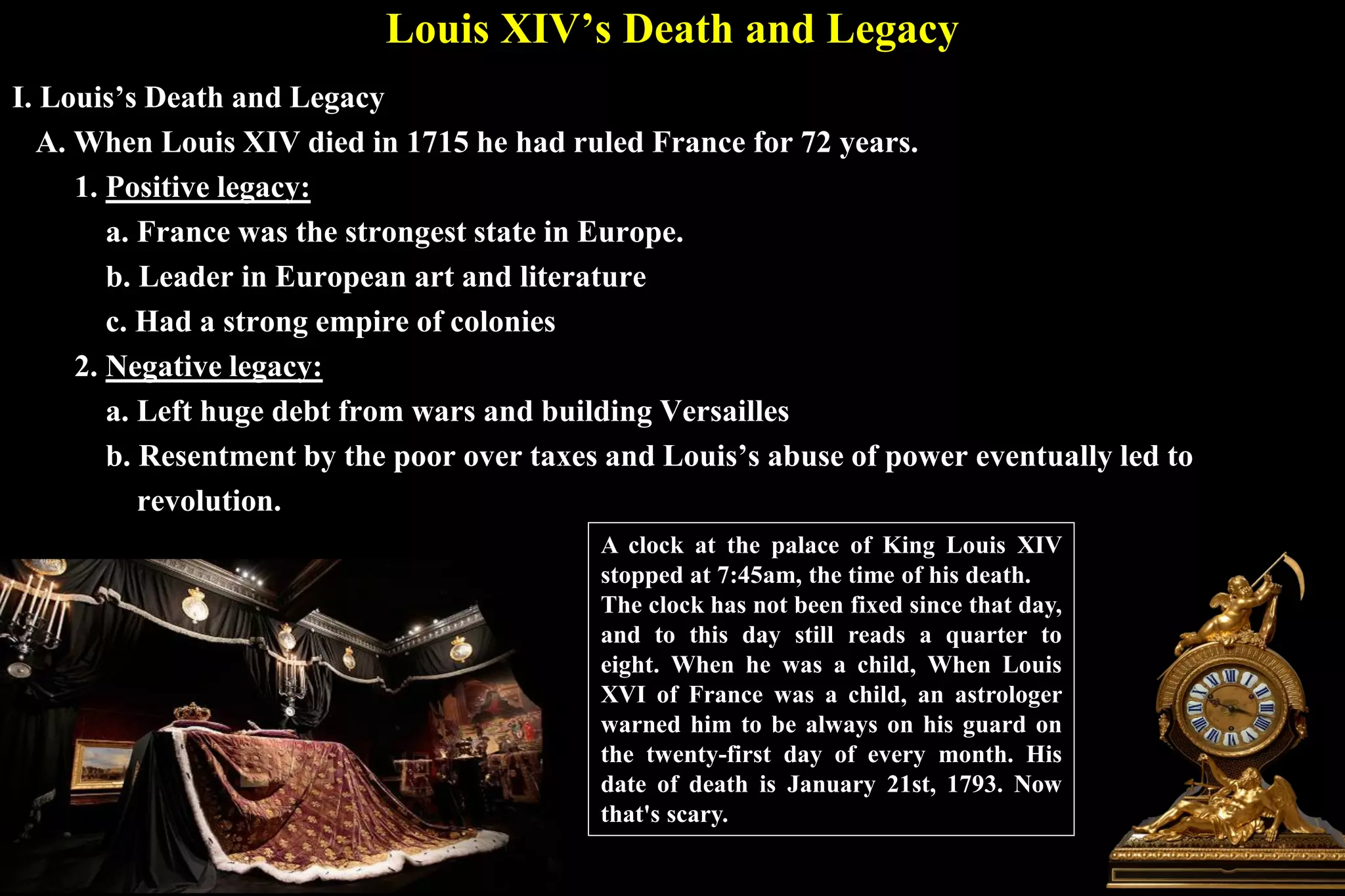

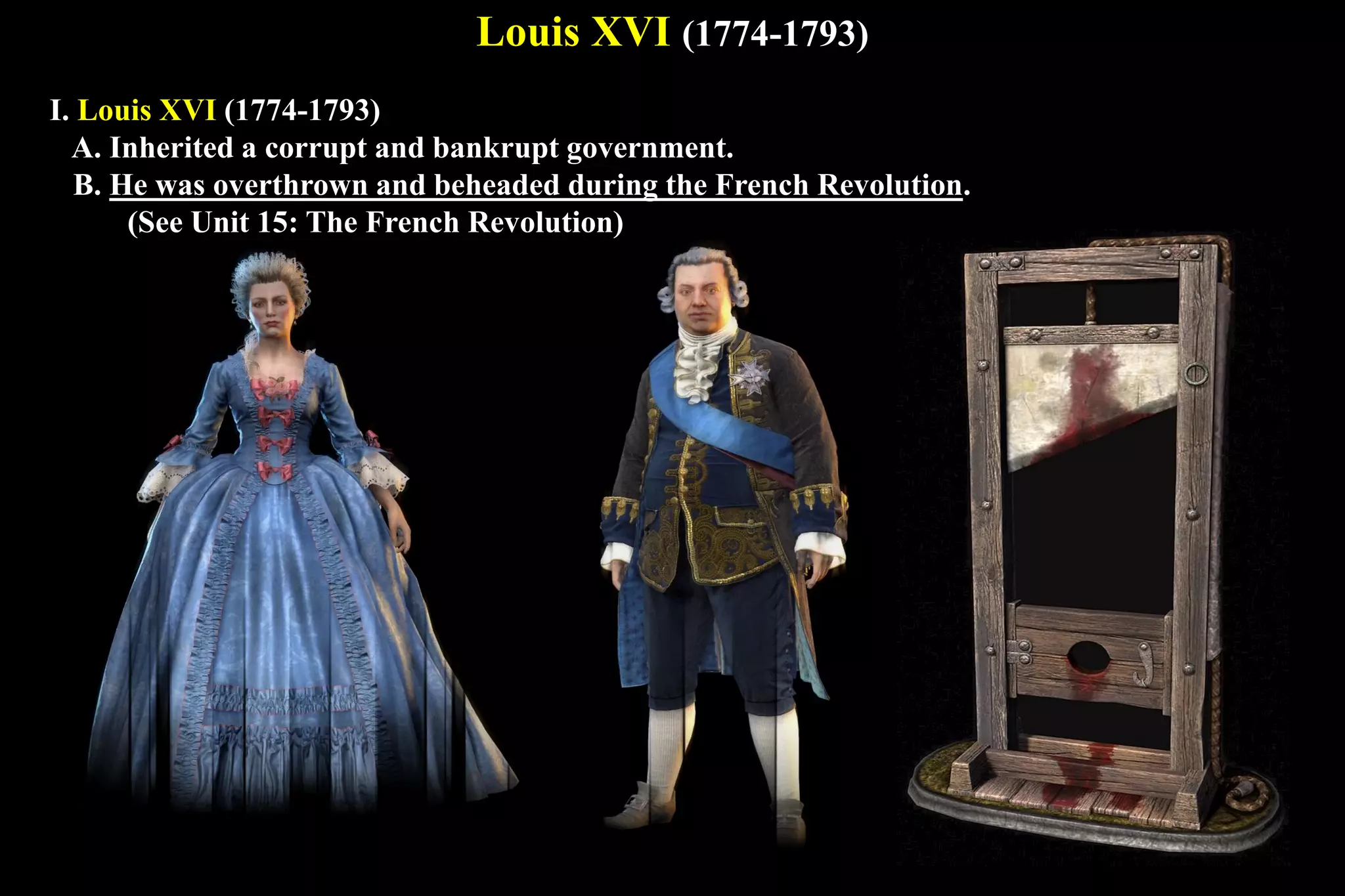



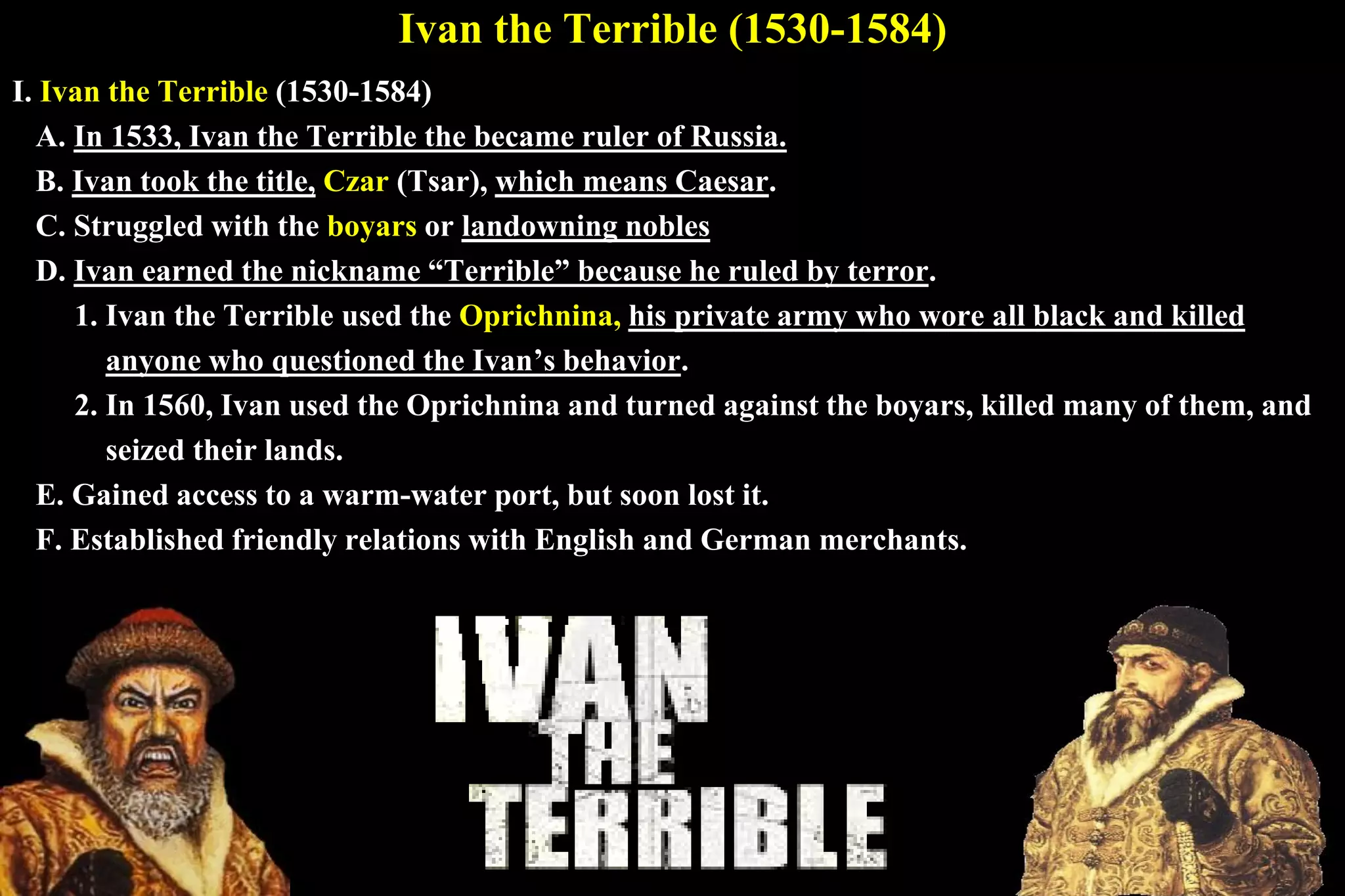


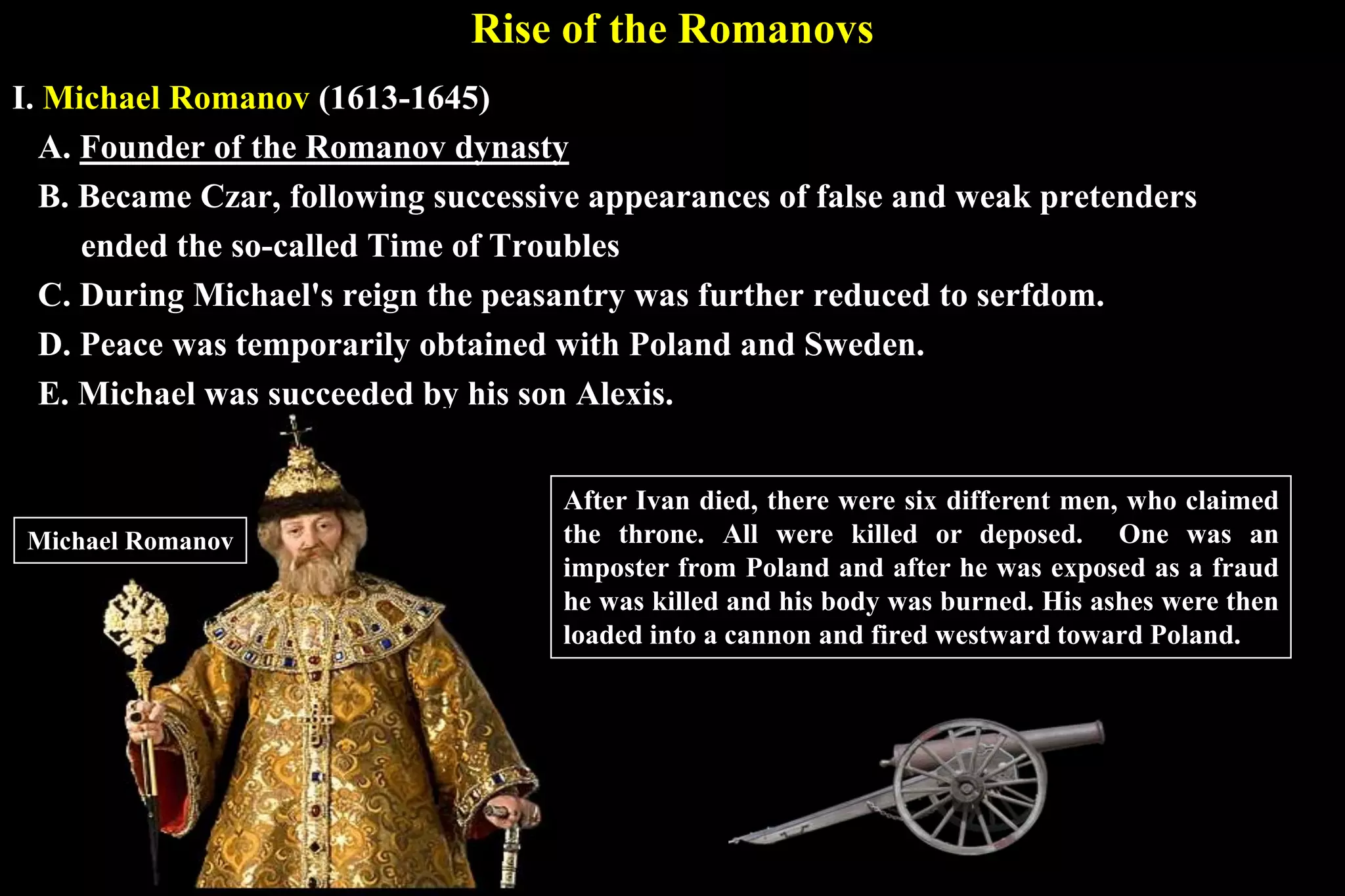

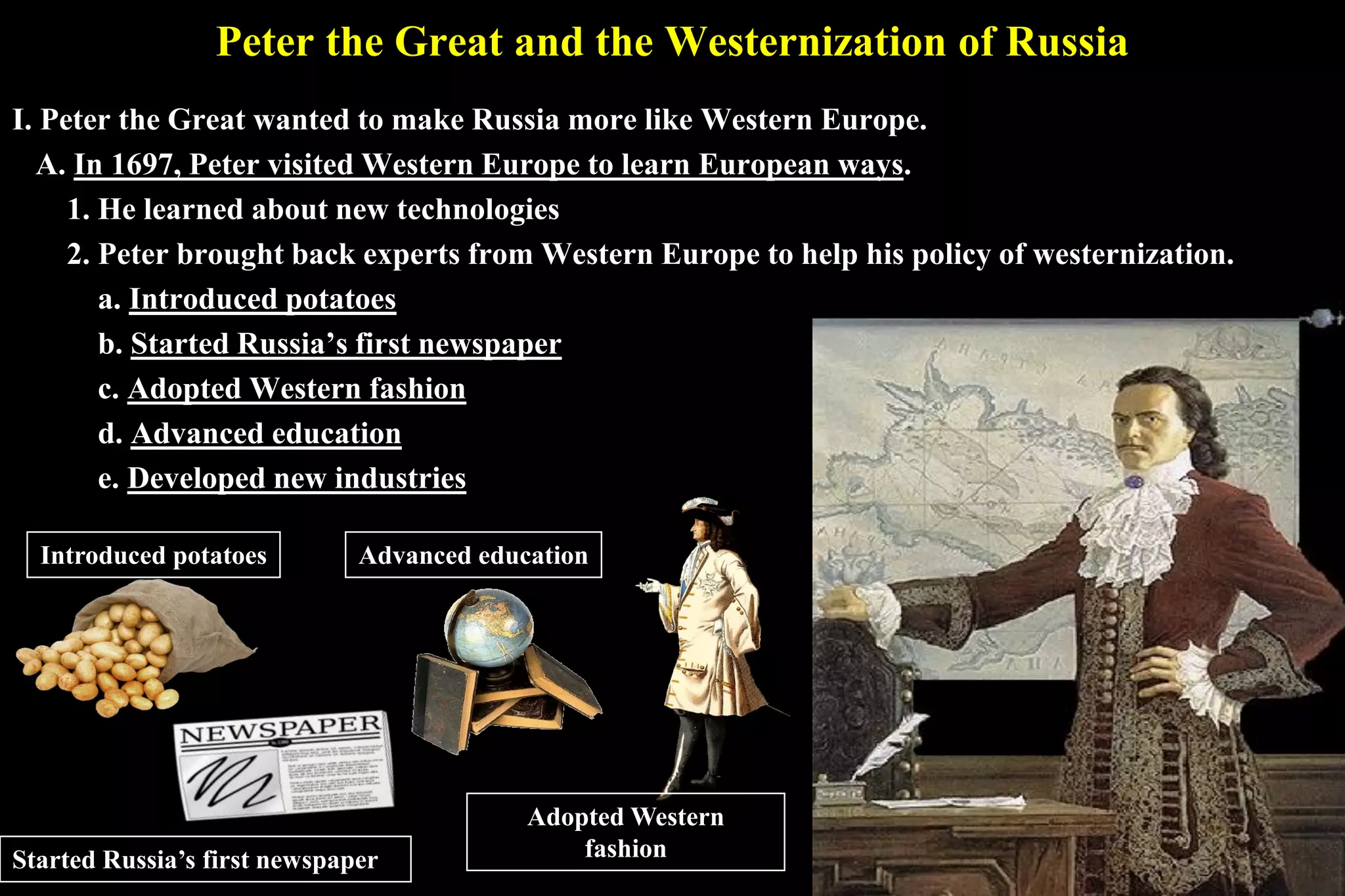



![Peter III & Catherine the Great (1762-1796)
I. Catherine the Great (1762-1796)
A. Catherine was a German princess who wed Peter III, the heir to the Russian throne in 1745.
B. Peter III proved to be incompetent and mentally unstable [Behavior was very child-like].
1. In 1762, Catherine with the support of a group of army officers had Peter III imprisoned
and killed.
a. Catherine promised to give the nobility and military more power for their help.
Peter III of Russia was considered “immature” by several in his country, including his wife and future
Czarina, Catherine (the Great). One day, he found that the heads of two of his army commanders had
been chewed off. When the perpetrator (a rat) was caught, he ordered a military tribunal convened to
court martial the criminal. He himself designed the gallows that were used to hang the criminal. The
criminal (rat) was left hanging in pubic for 3 days, as an example.
Peter III, to Catherine’s
annoyance used to play
with toy soldiers in their
bed.
Peter III](https://image.slidesharecdn.com/developmentofnationalstates-190208140556/75/Development-of-national-states-79-2048.jpg)

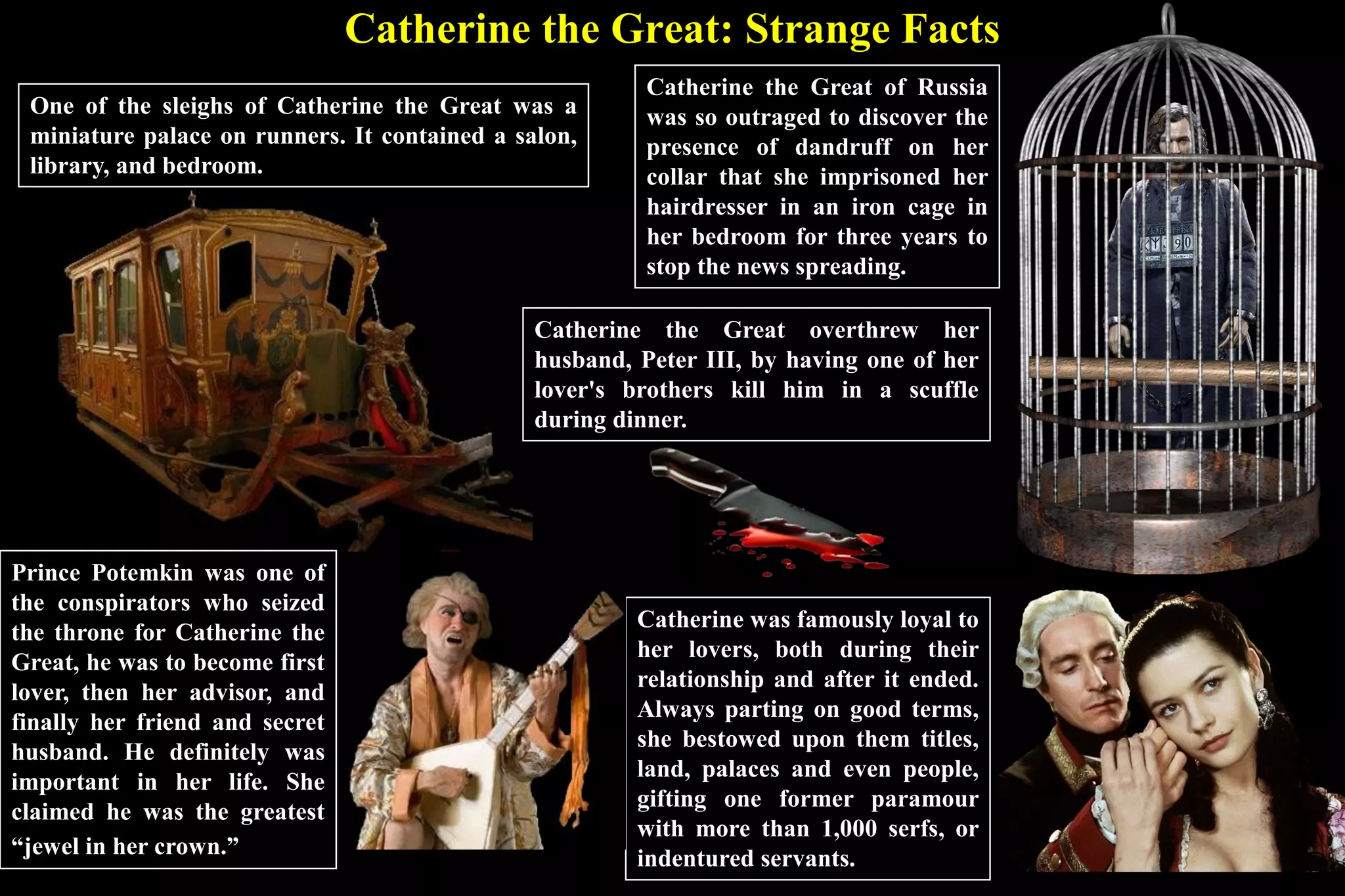

![Thirty Years War (1618-1648)
I. The Thirty Years War
A. A religious/political war fought in Europe between 1618-1648.
B. Defenestration of Prague
1. Hapsburg [Sometimes spelled “Habsburg”] Catholic leader issued a document called the
“Letter of Majesty,” which had granted the majority Protestant population freedom of
religion in Bohemia.
2. In 1618, King Ferdinand II revoked his predecessor’s “Letter of Majesty.”
a. Defenestration of Prague- Delicate way of saying that Protestant nobles
threw two royal Catholic officials out of a window 70’ to their deaths.
b. This sparked a revolt between Catholics and Protestants as both
sides sought allies in a war that would widened into a political
war for control of Europe.
King Ferdinand II](https://image.slidesharecdn.com/developmentofnationalstates-190208140556/75/Development-of-national-states-83-2048.jpg)


